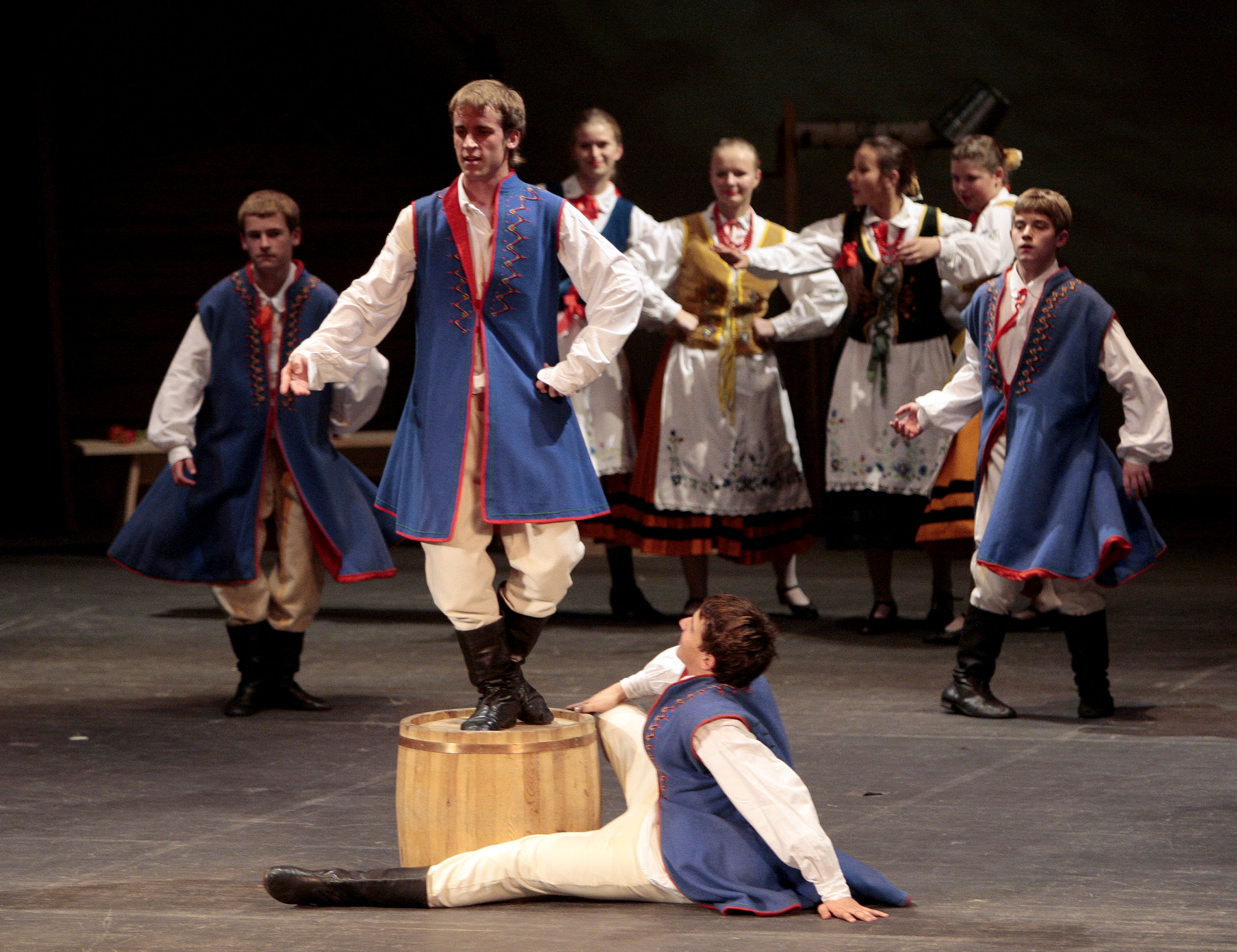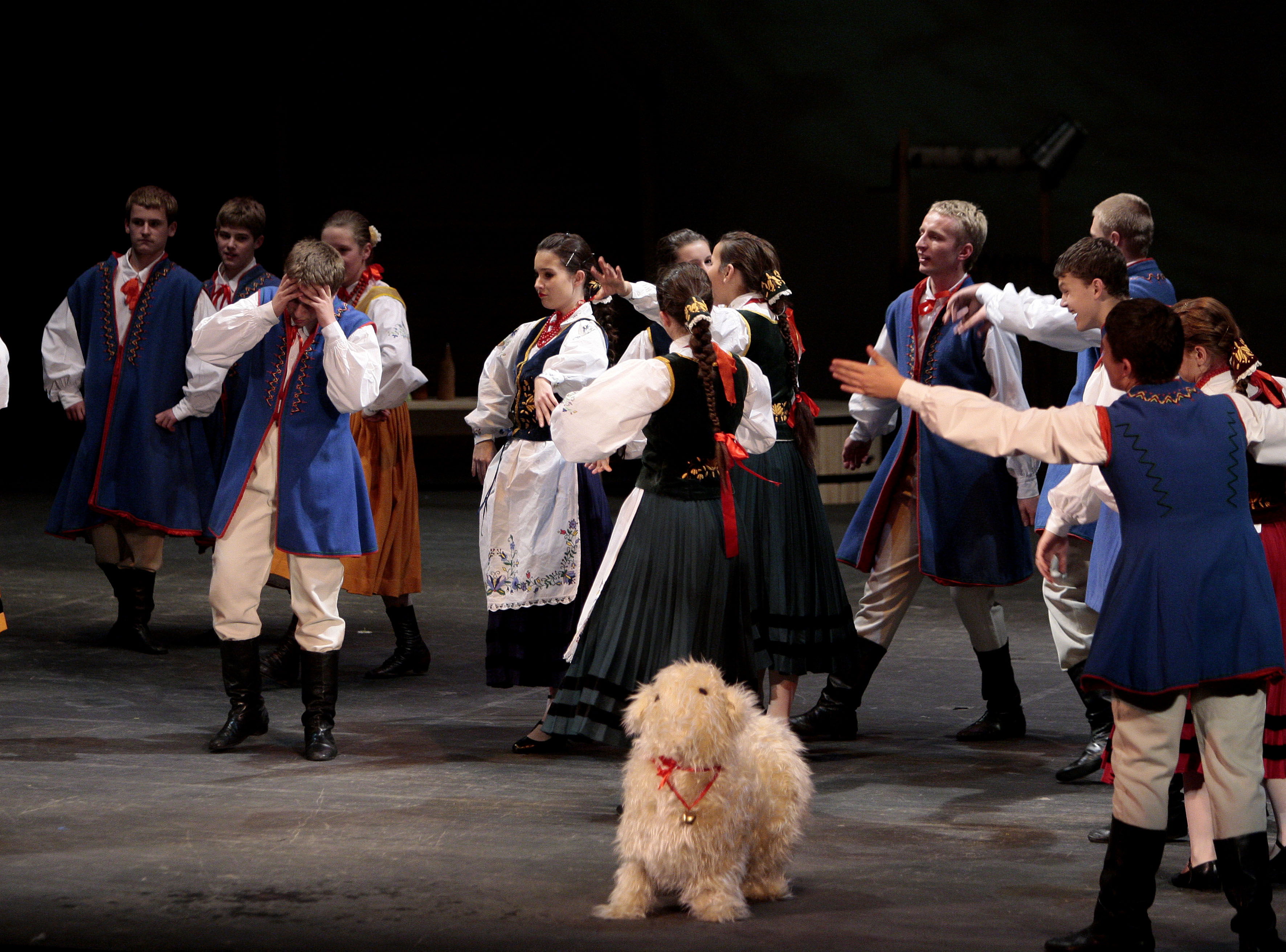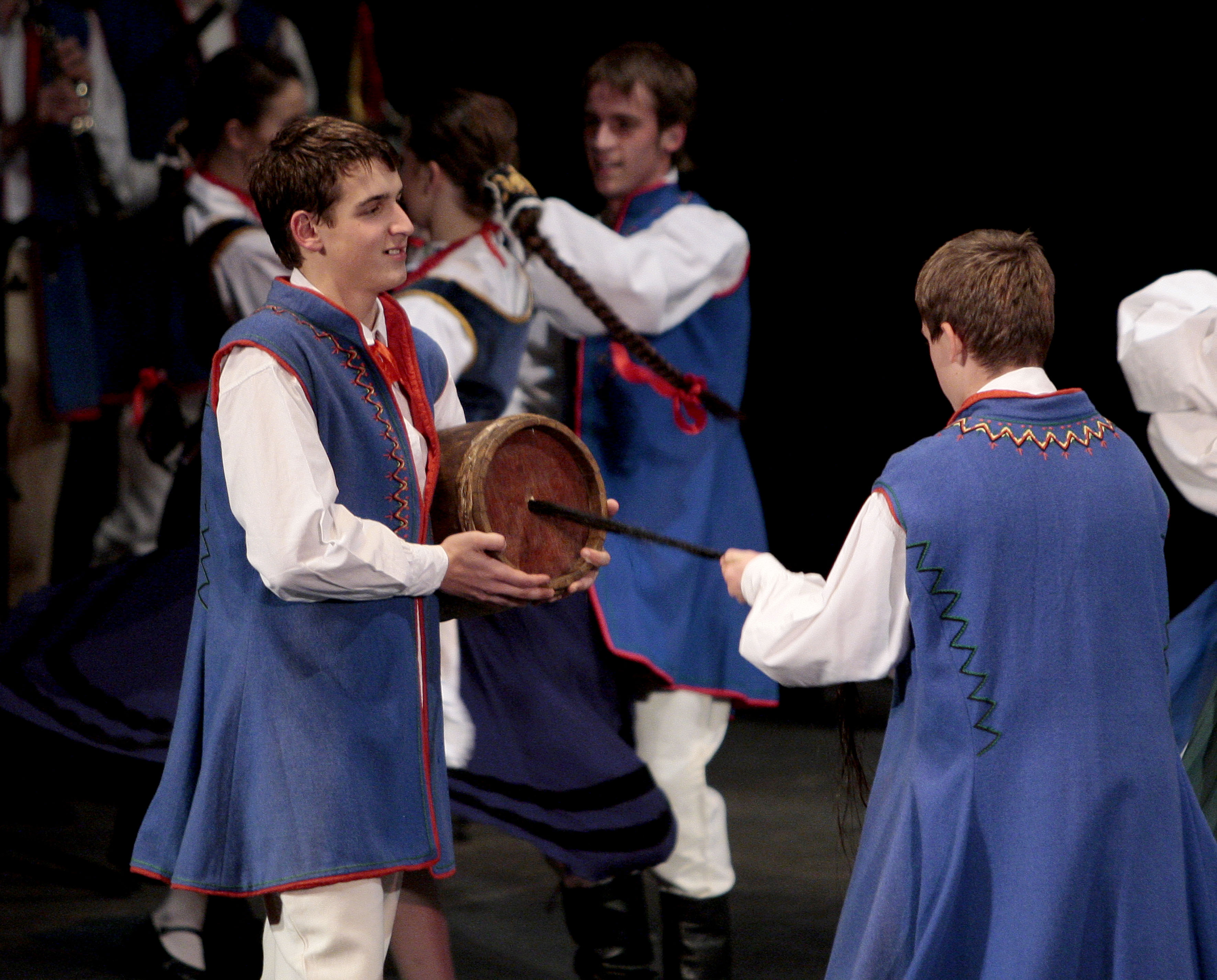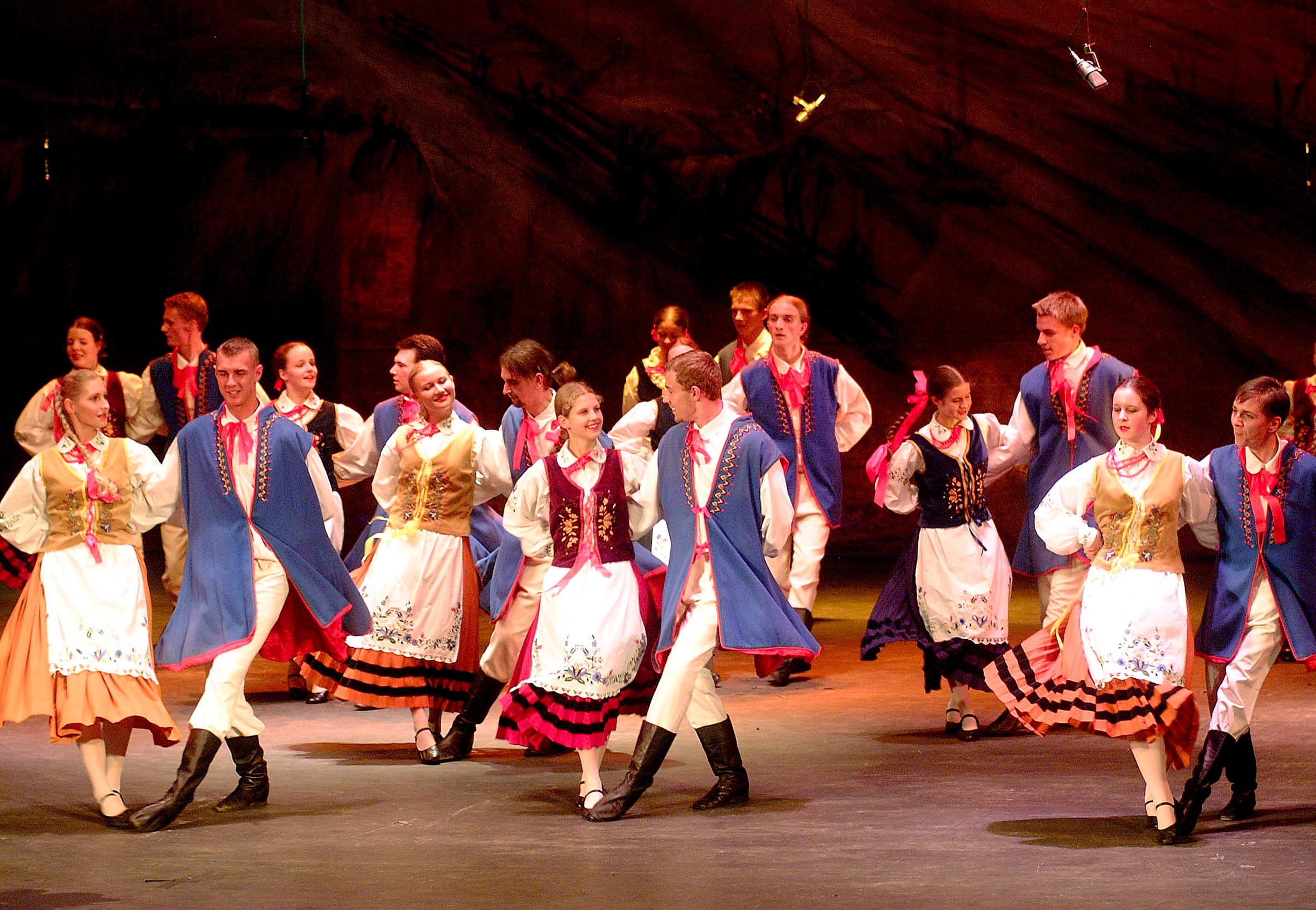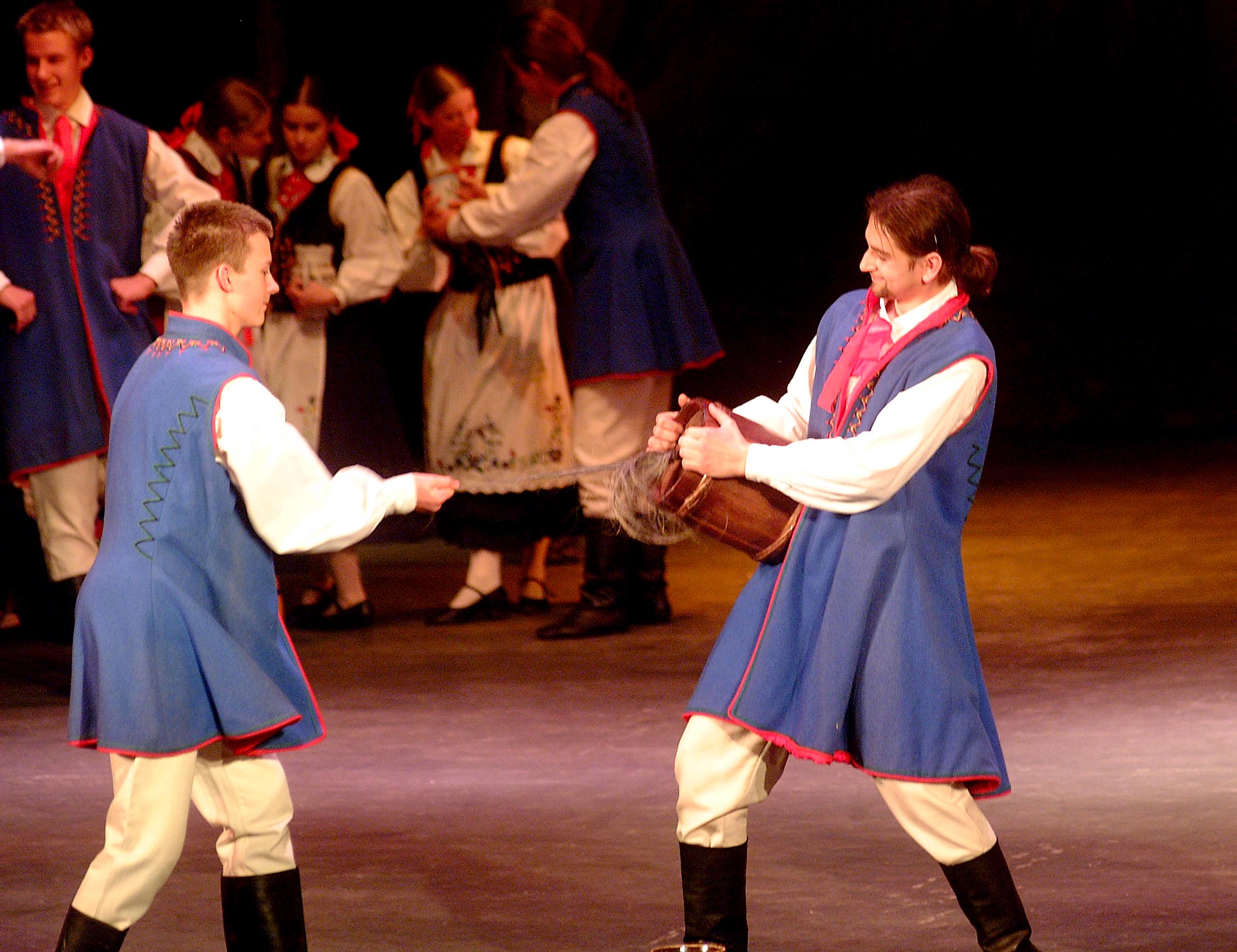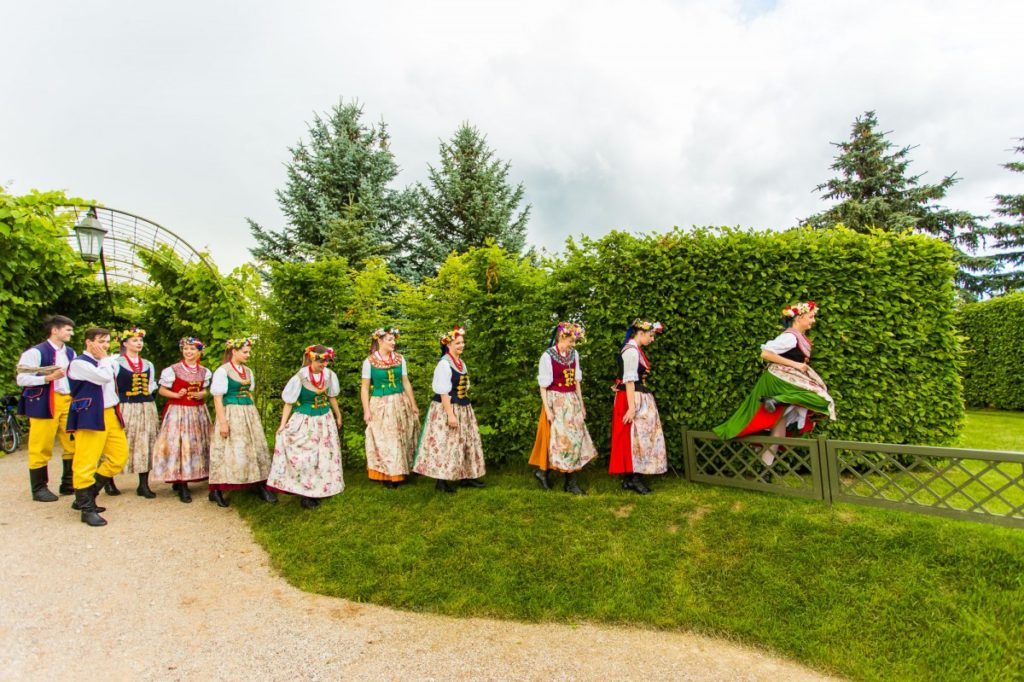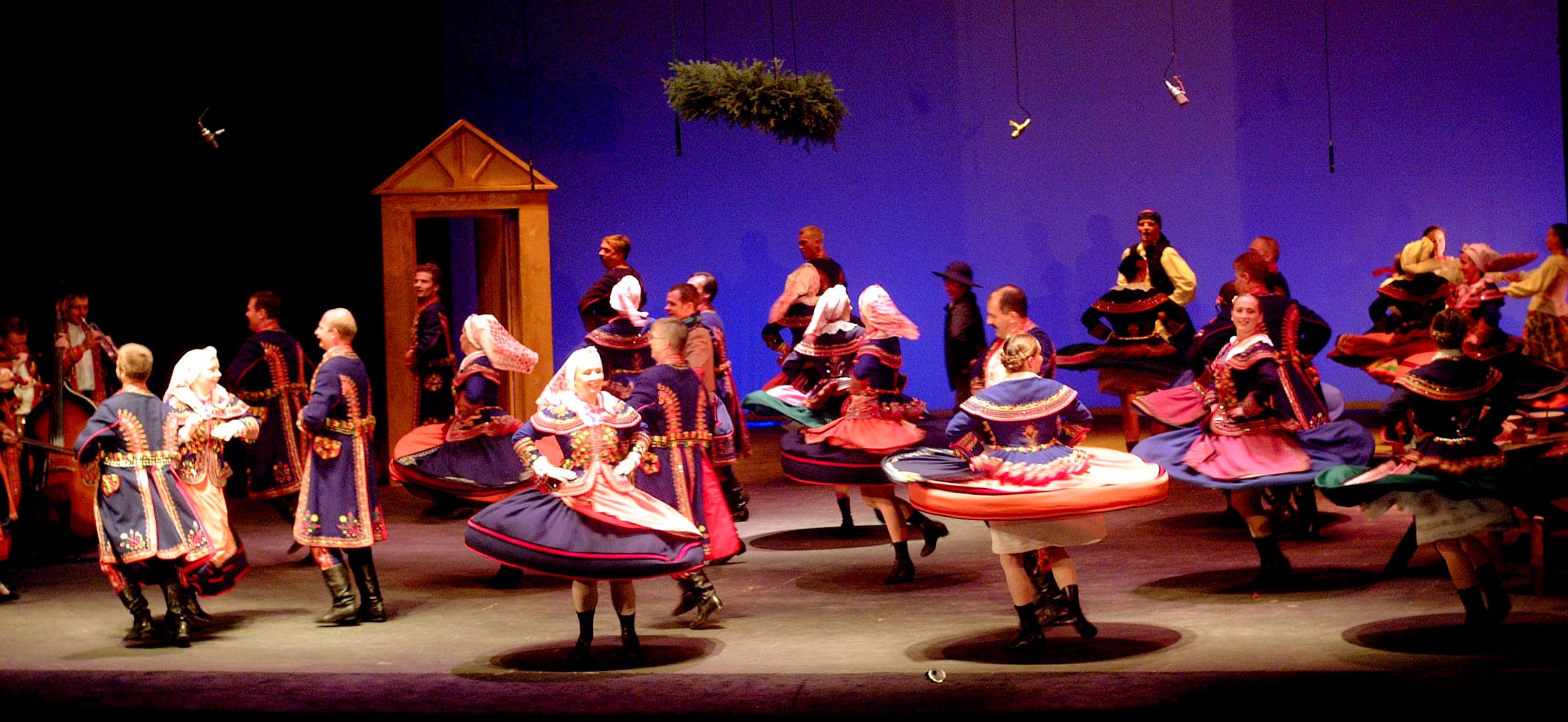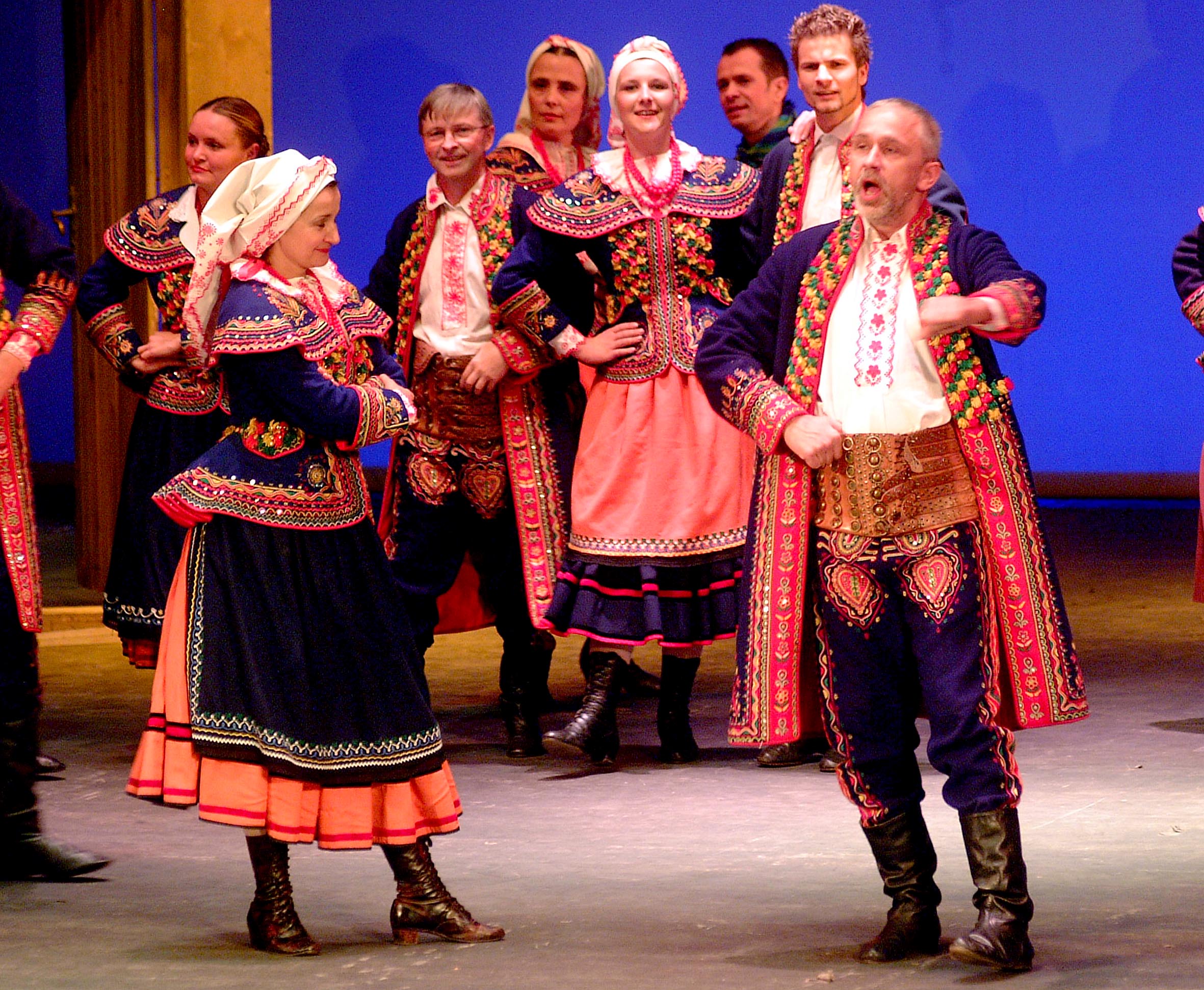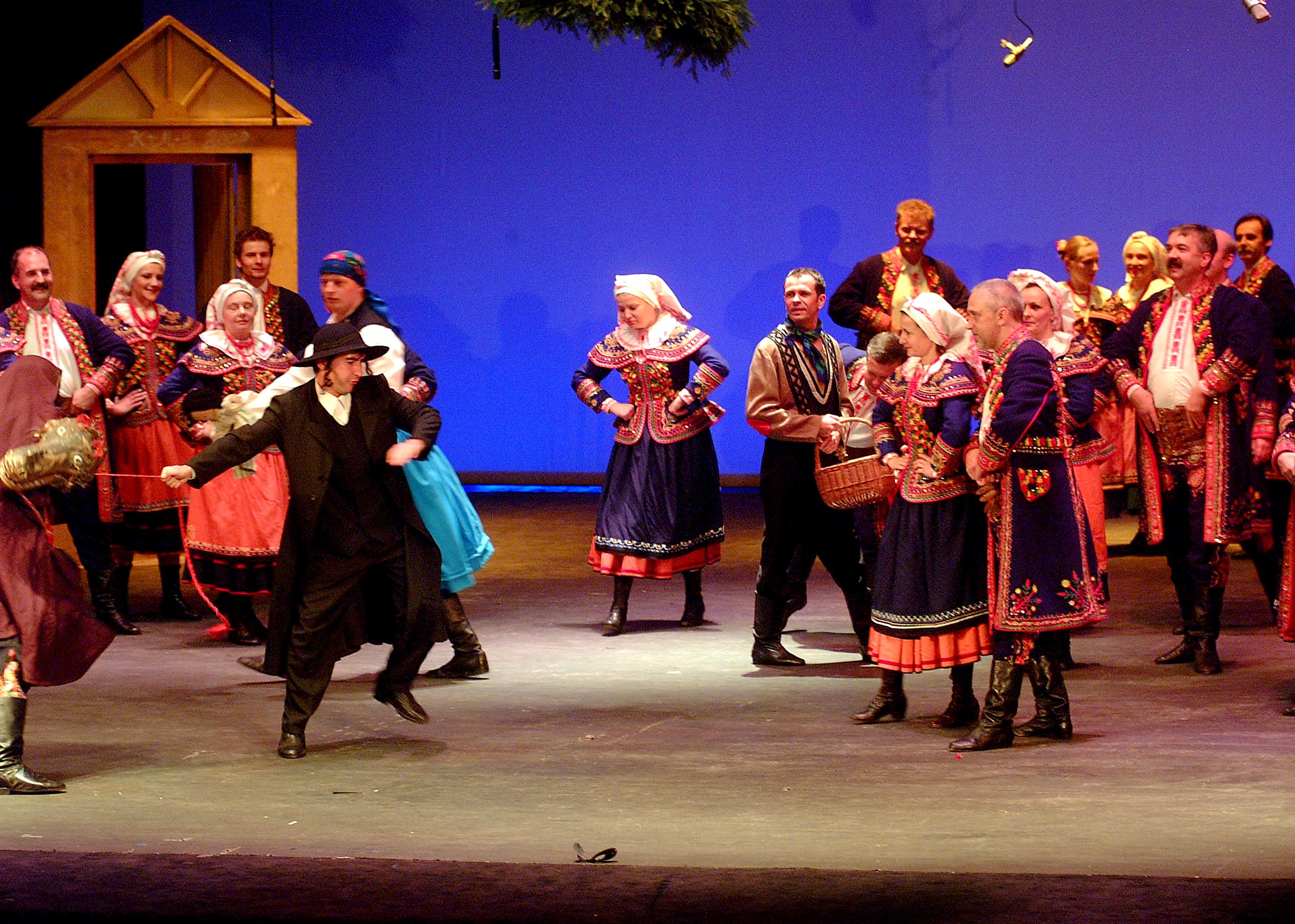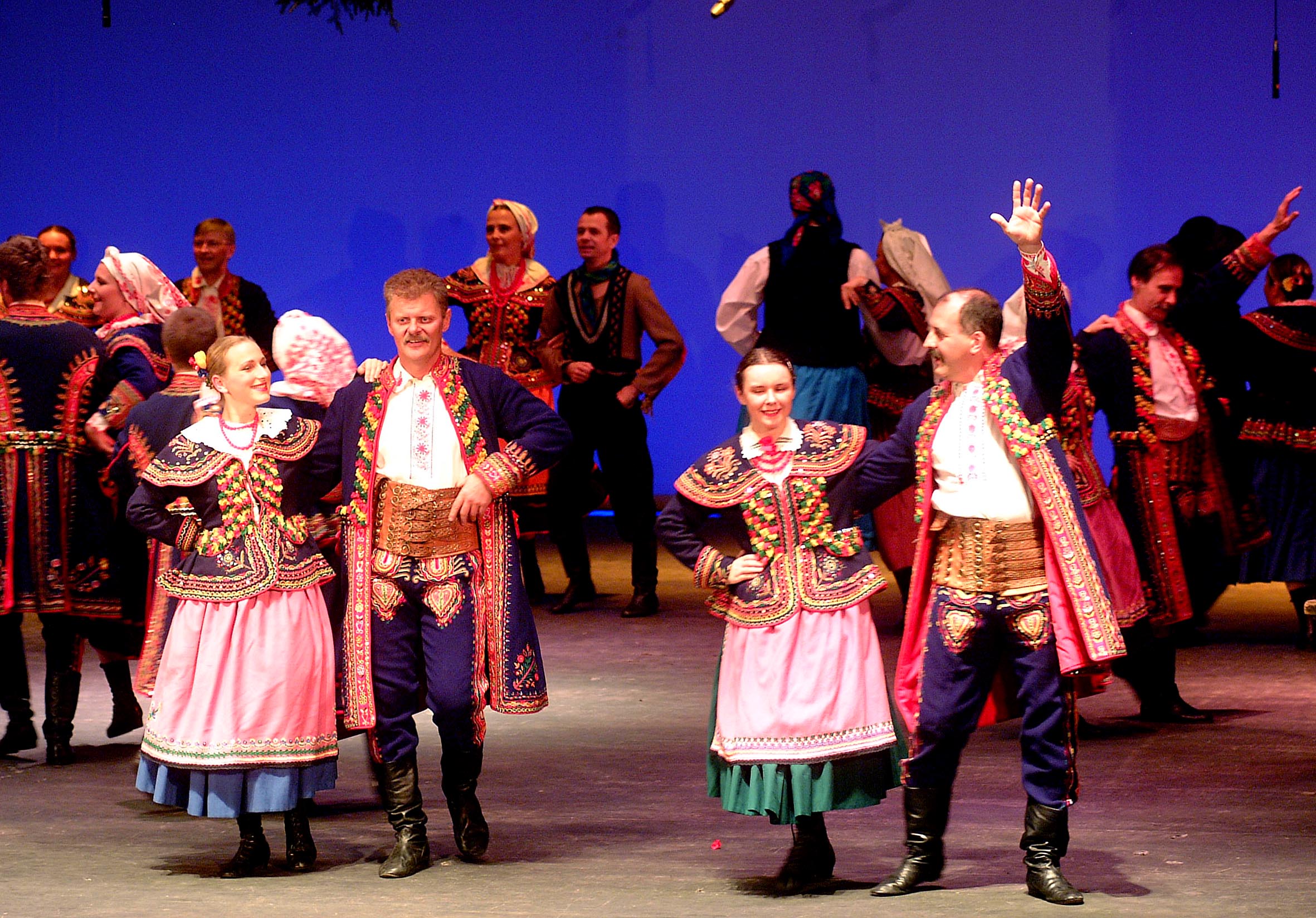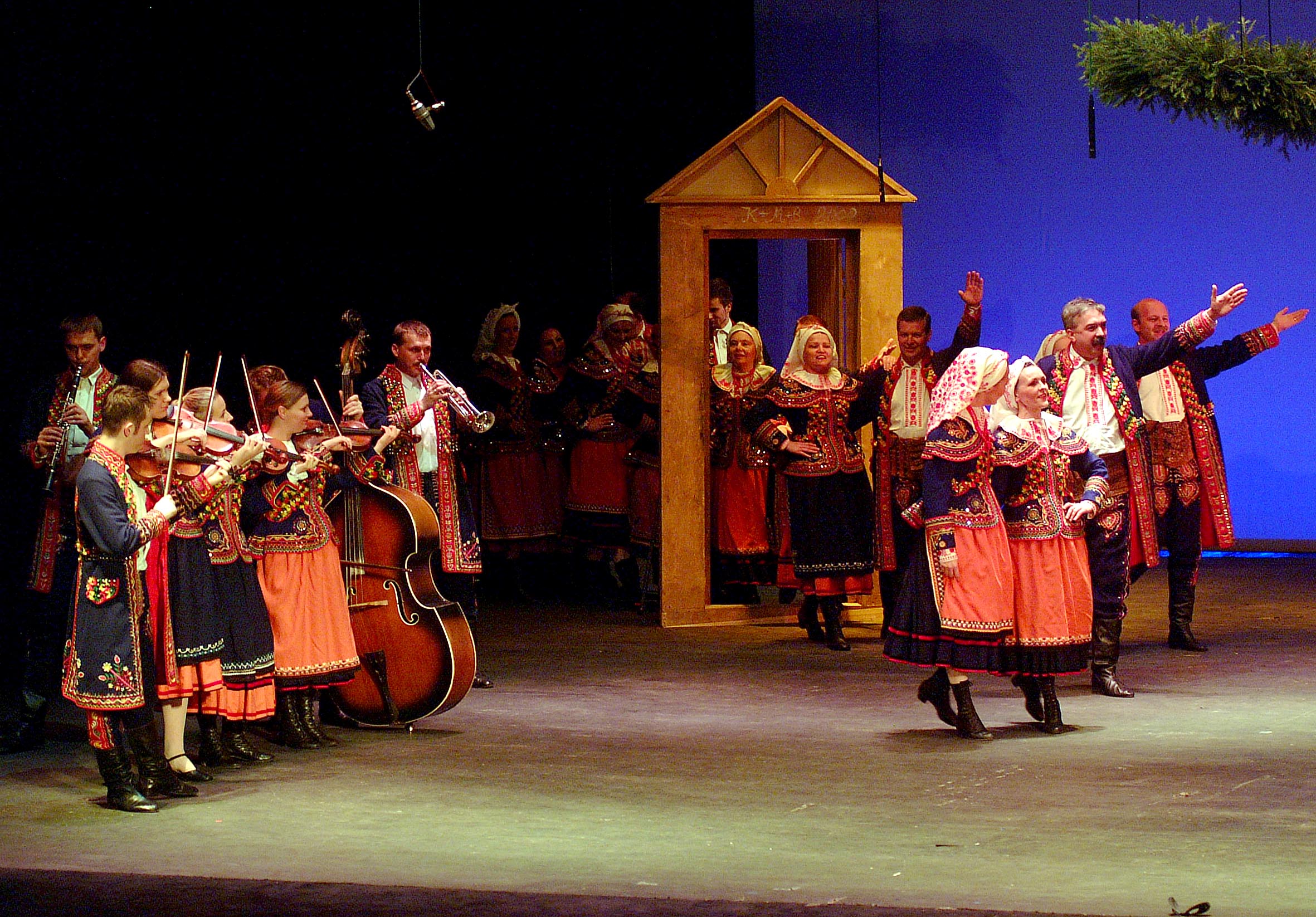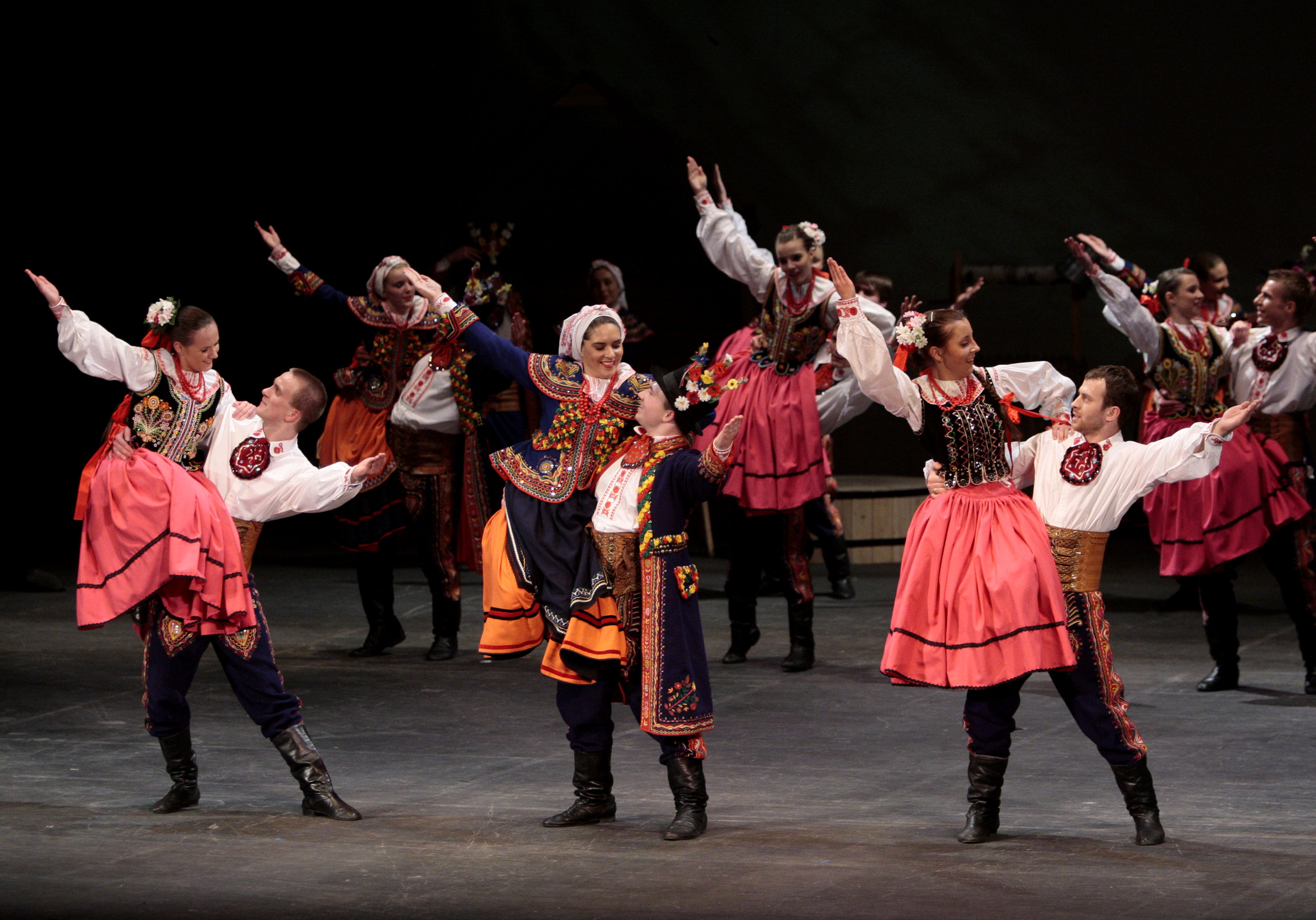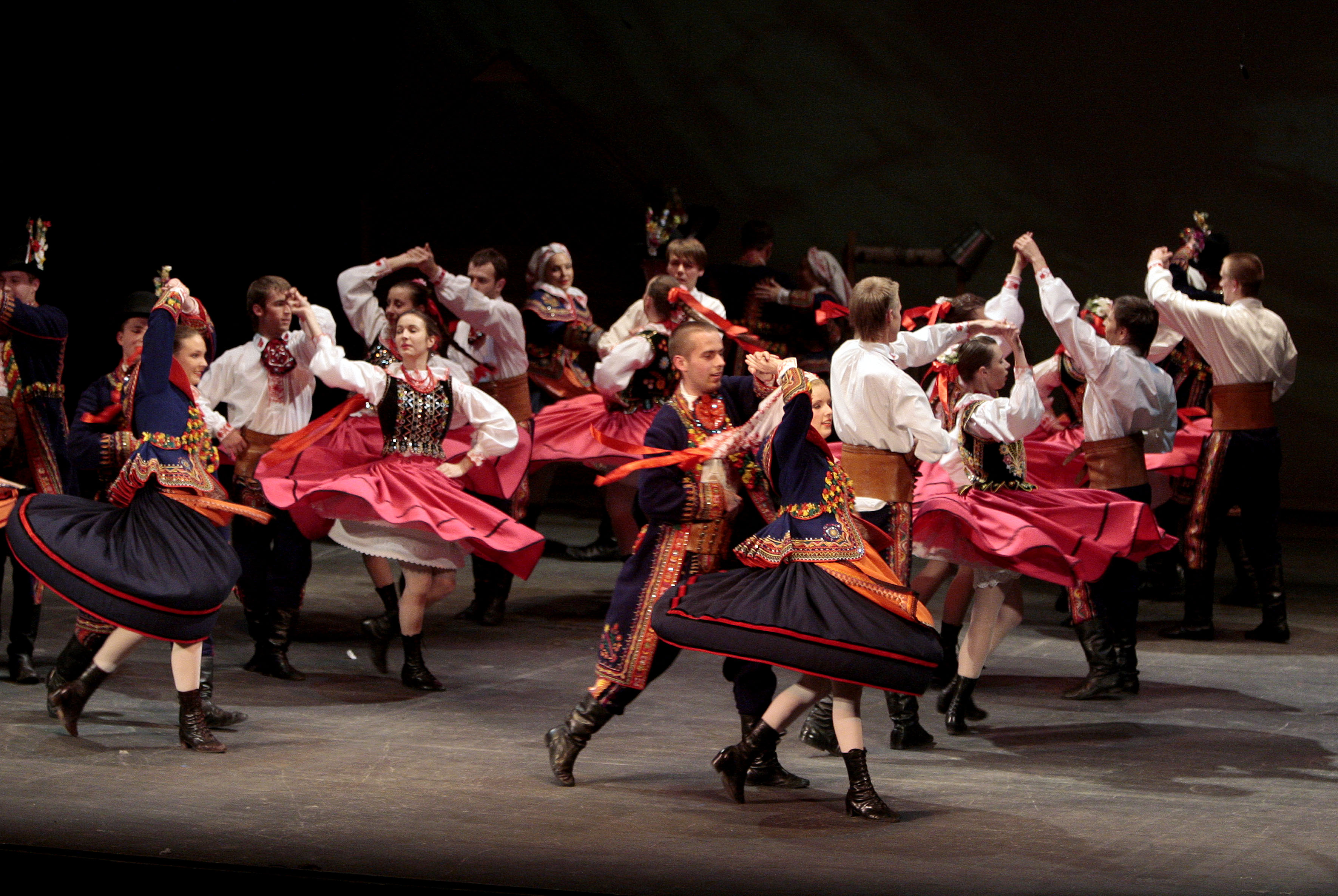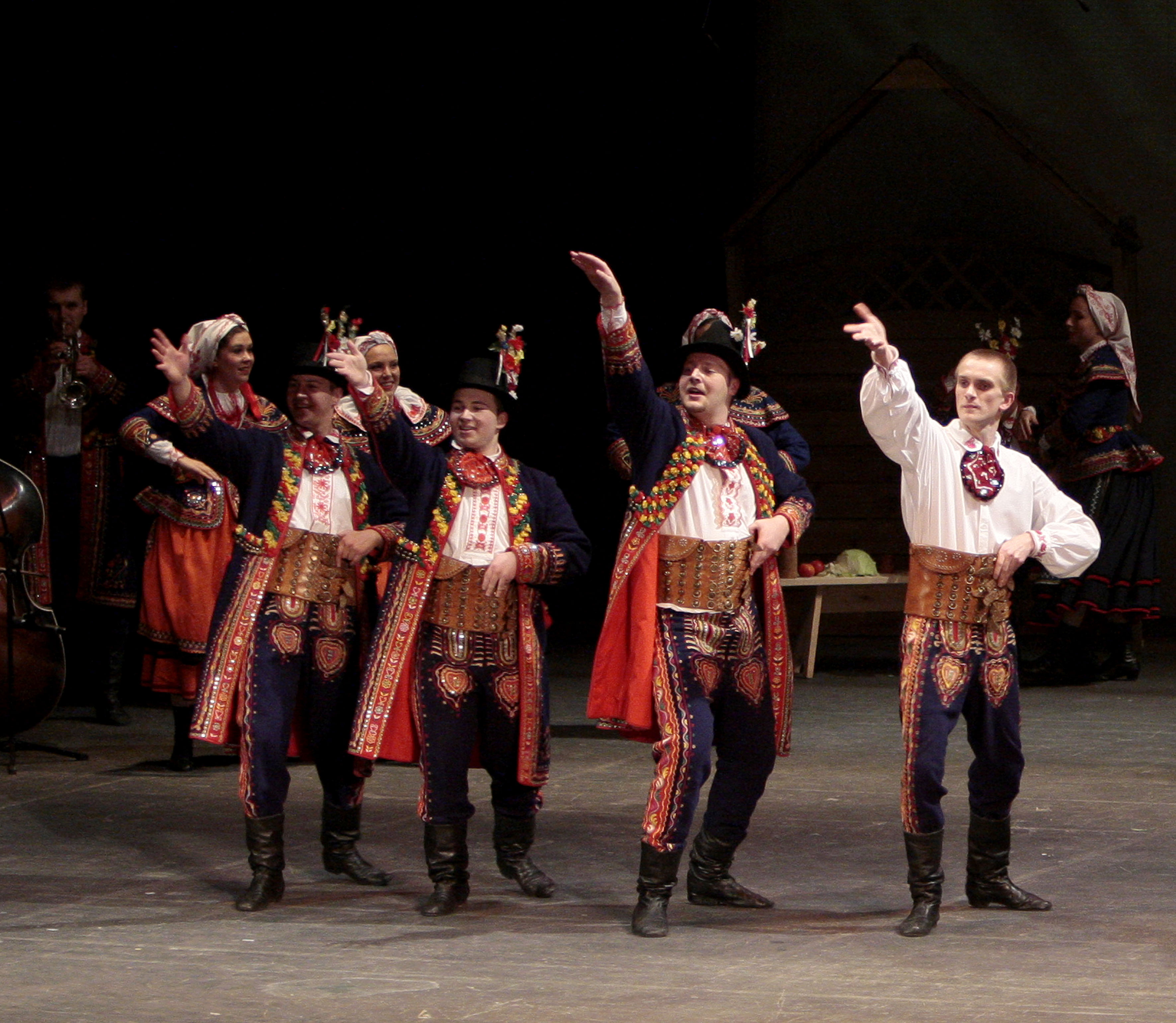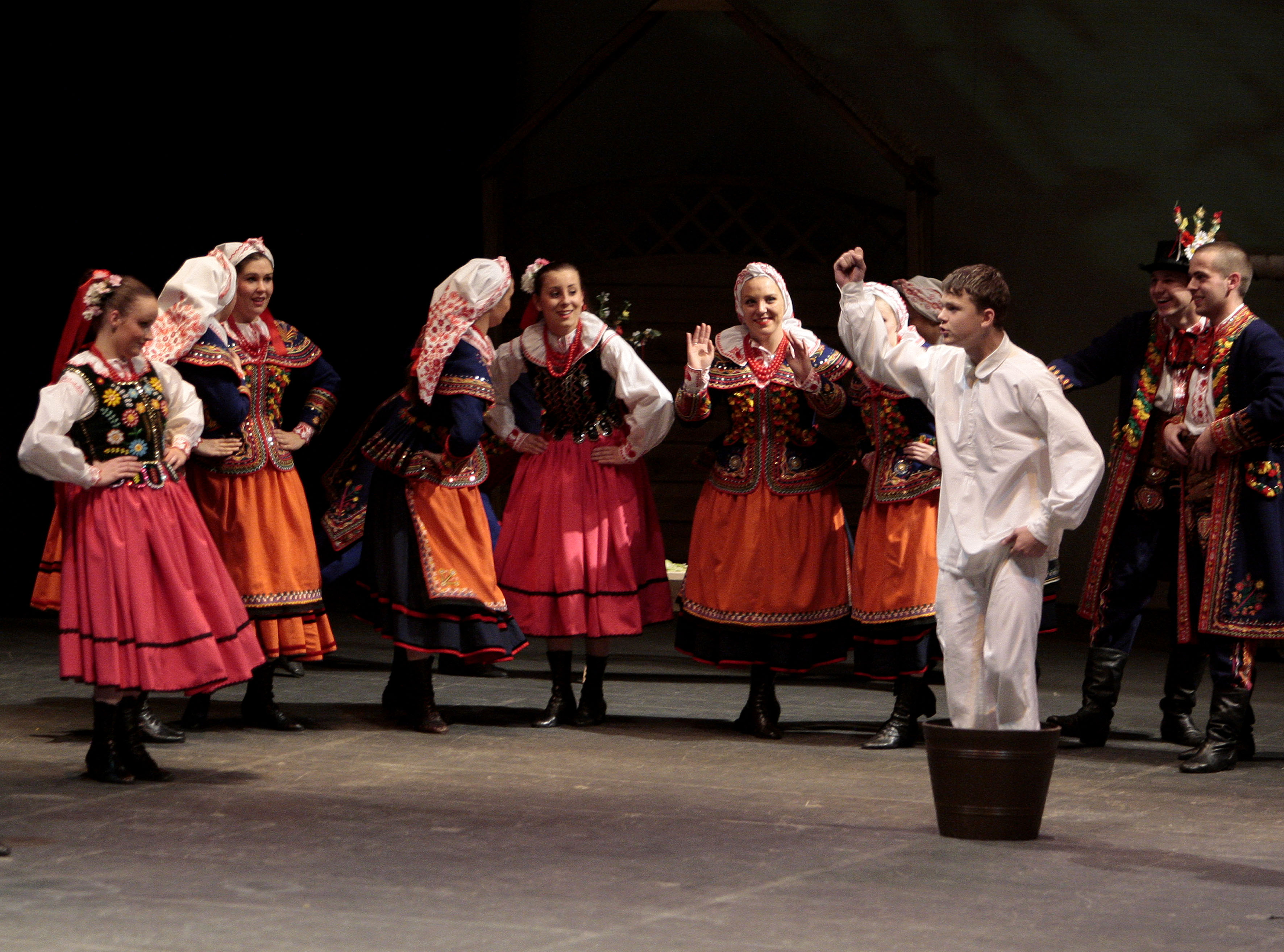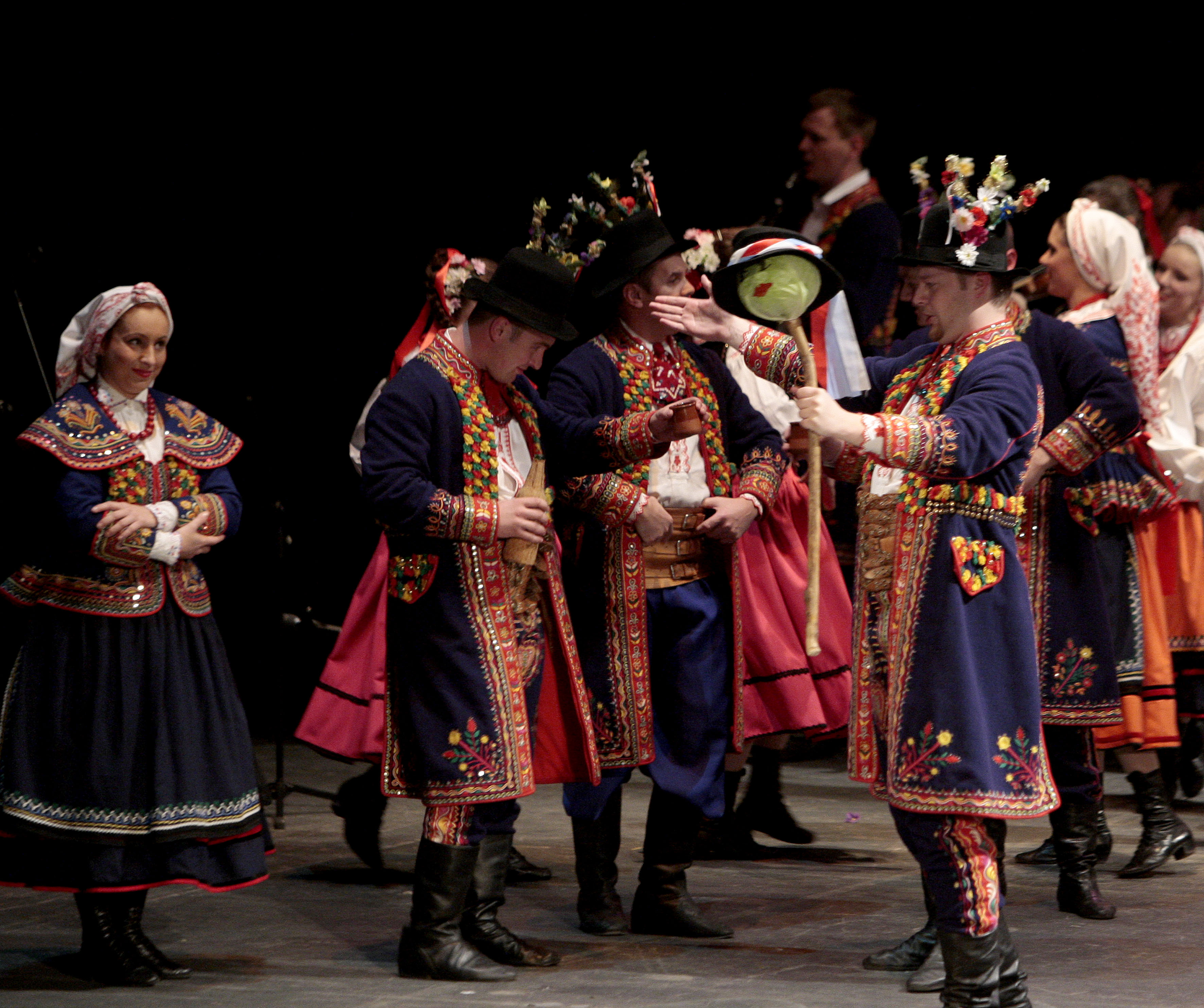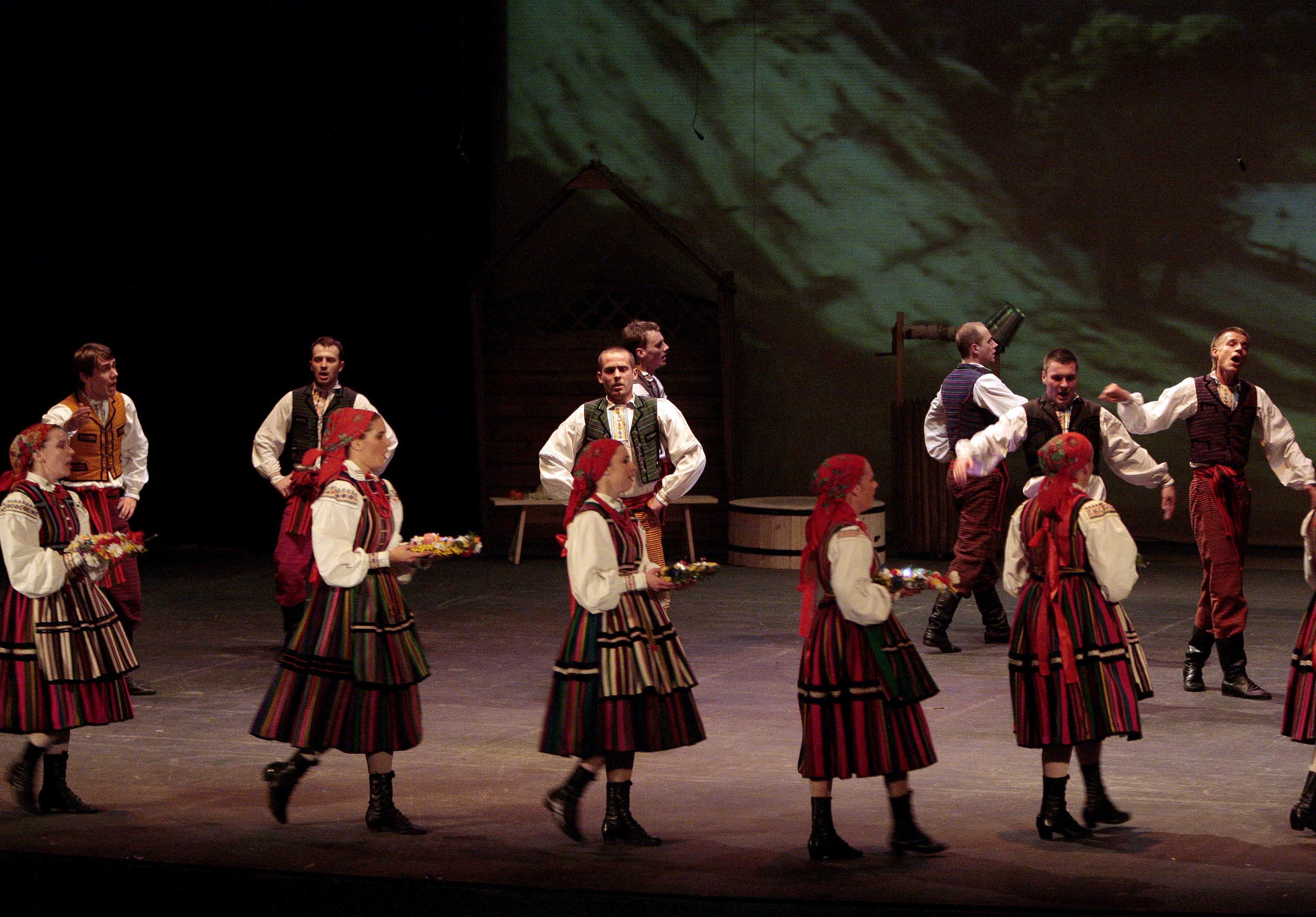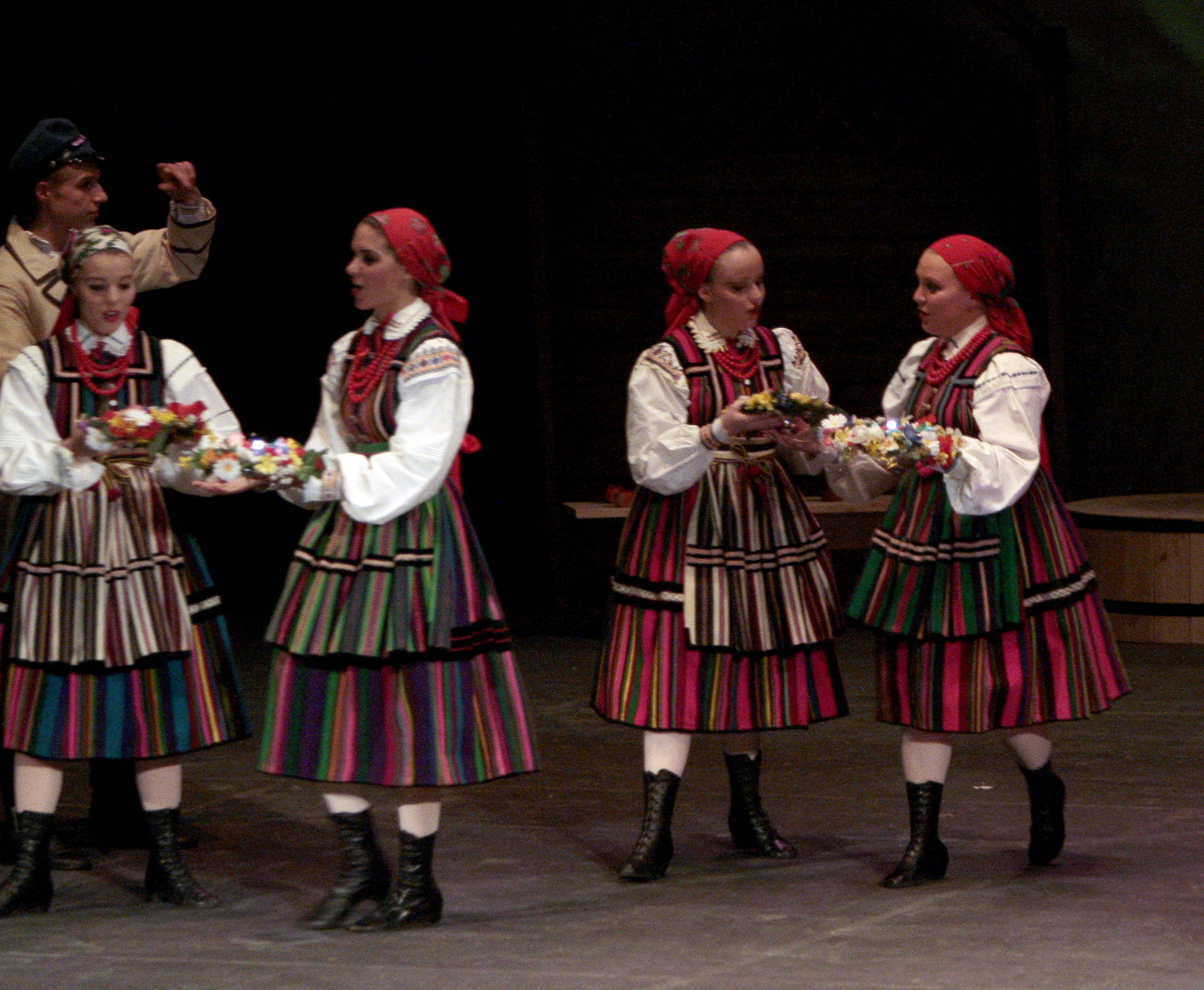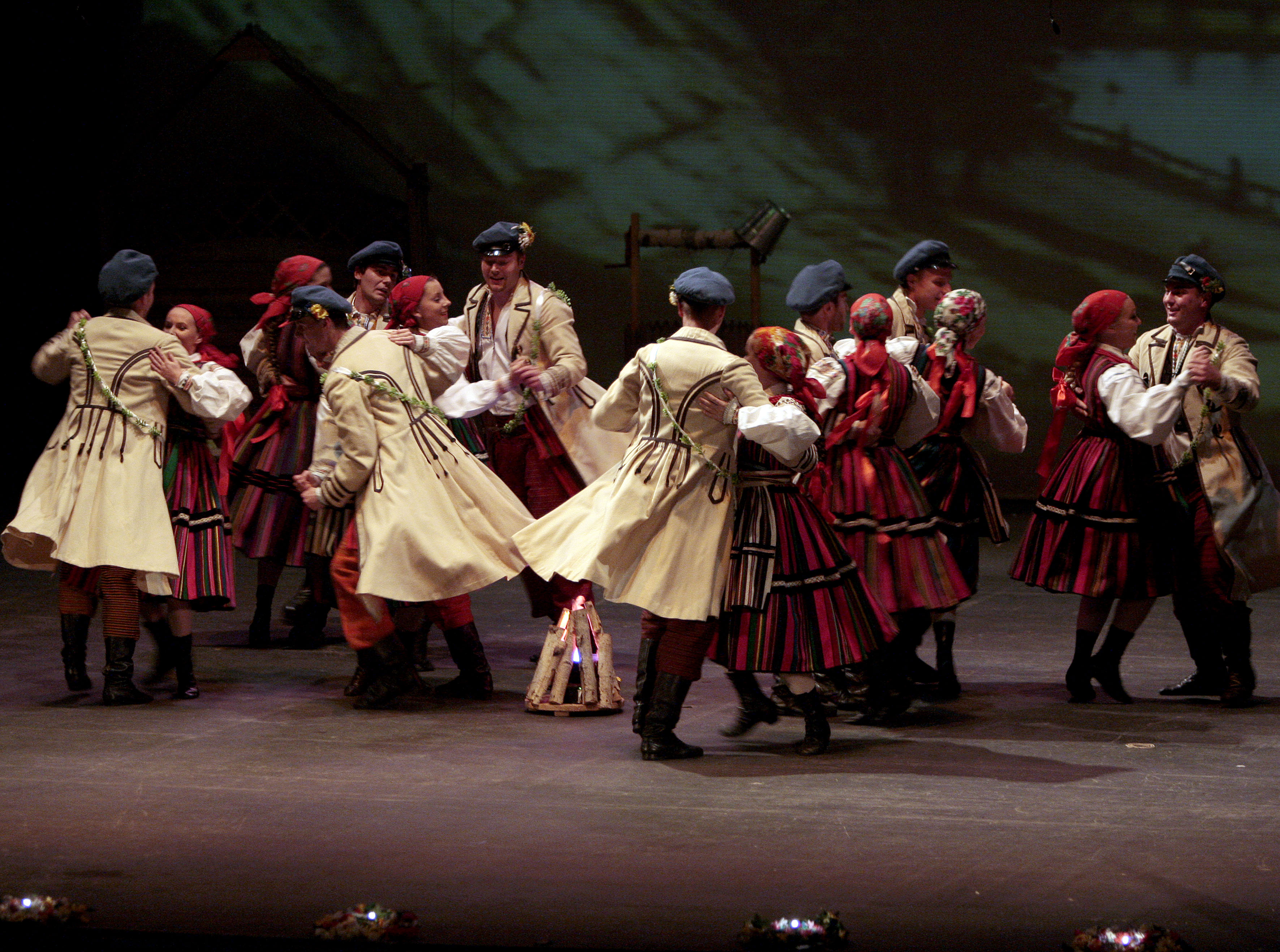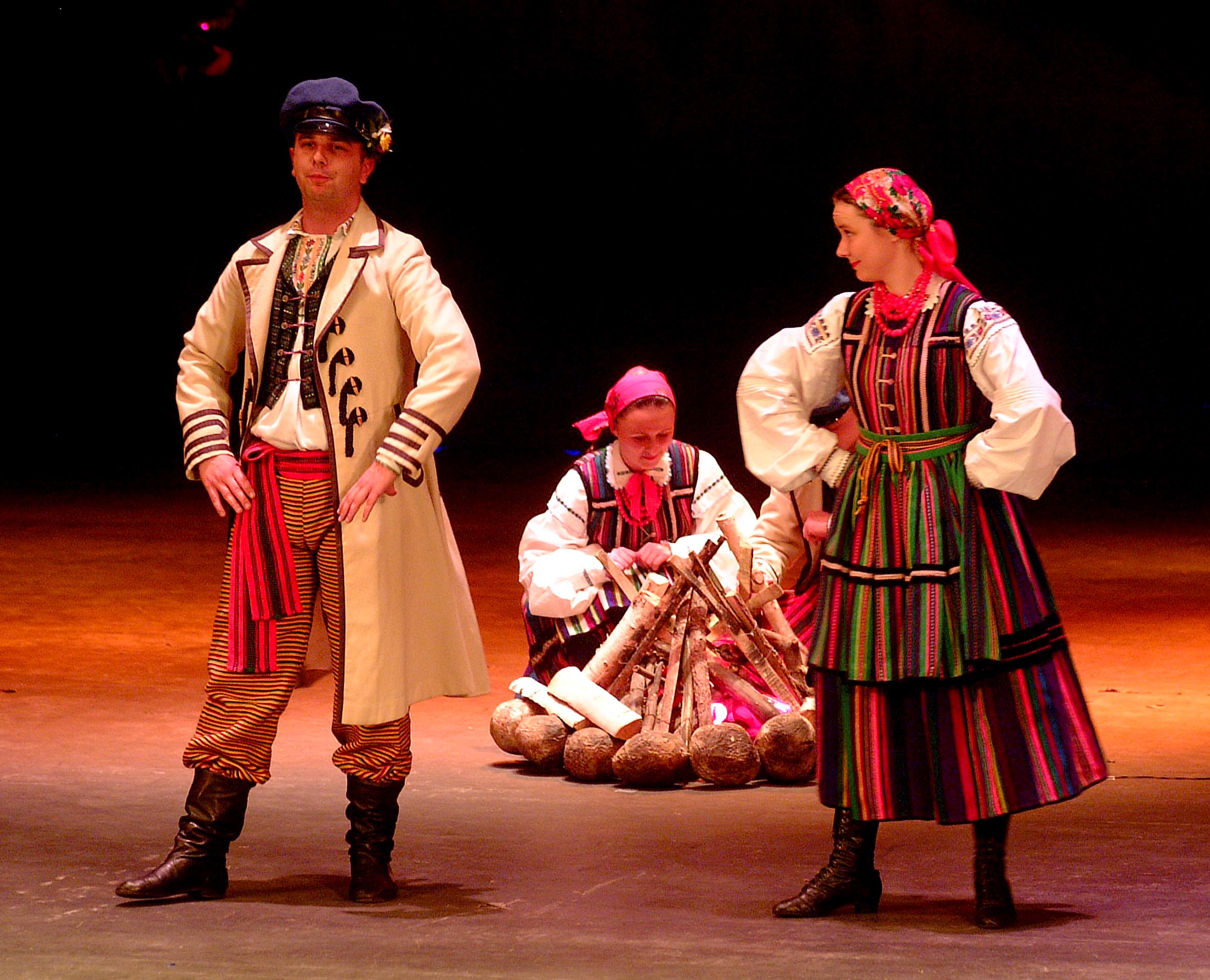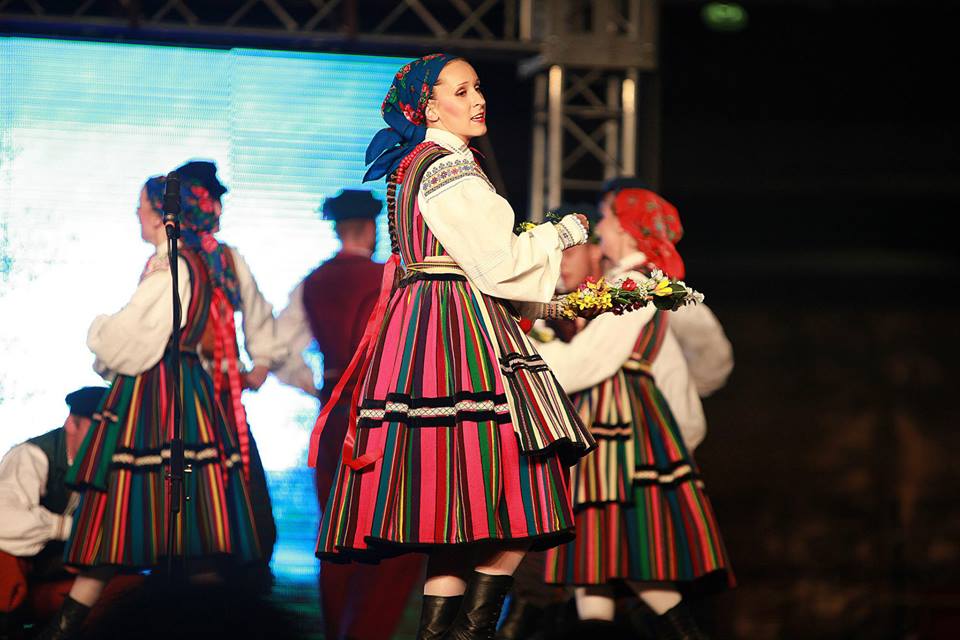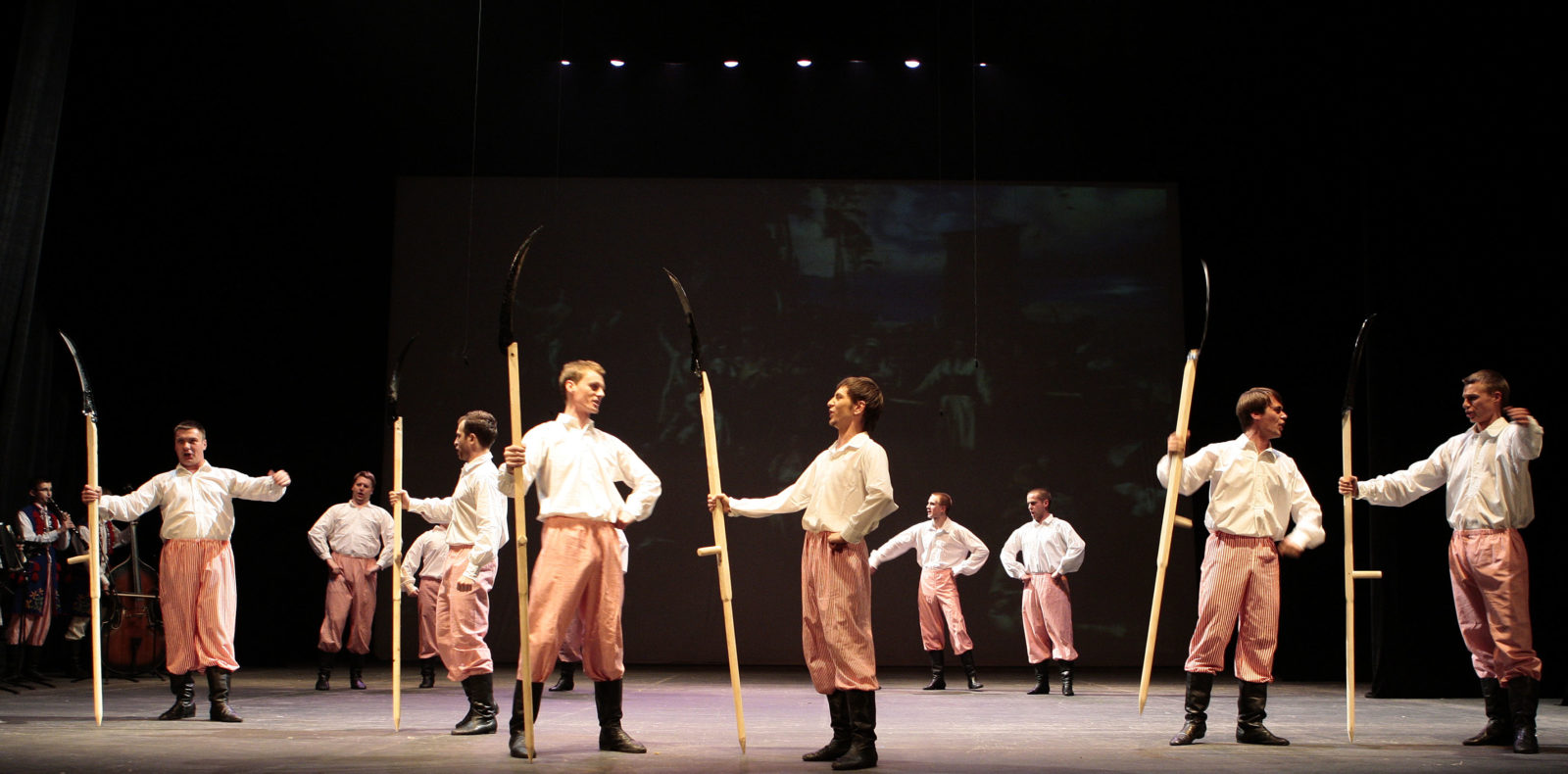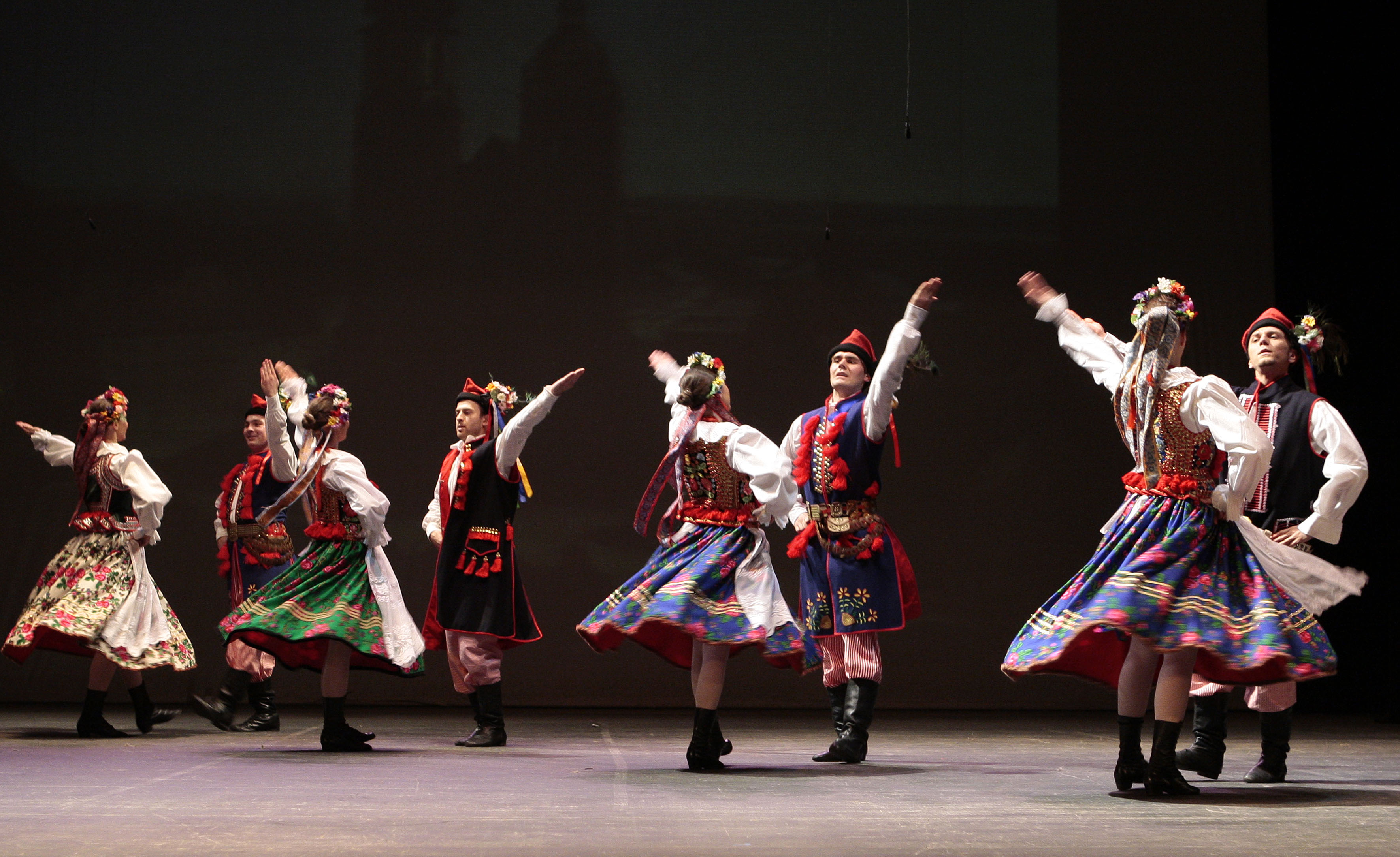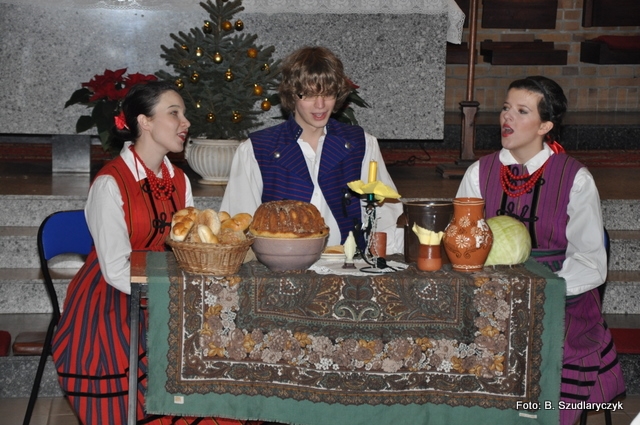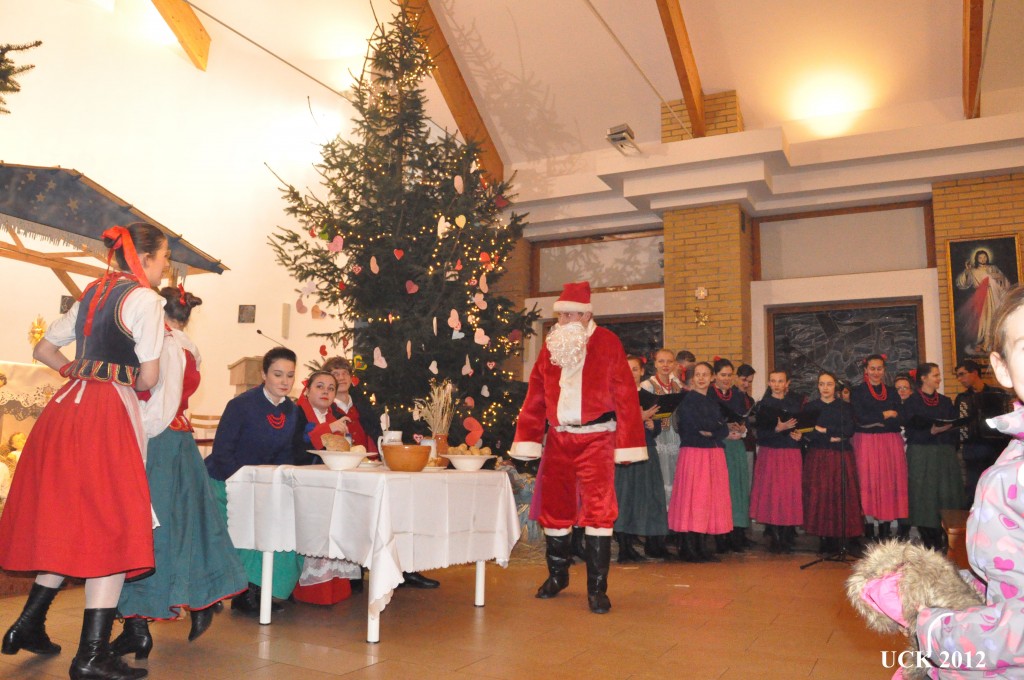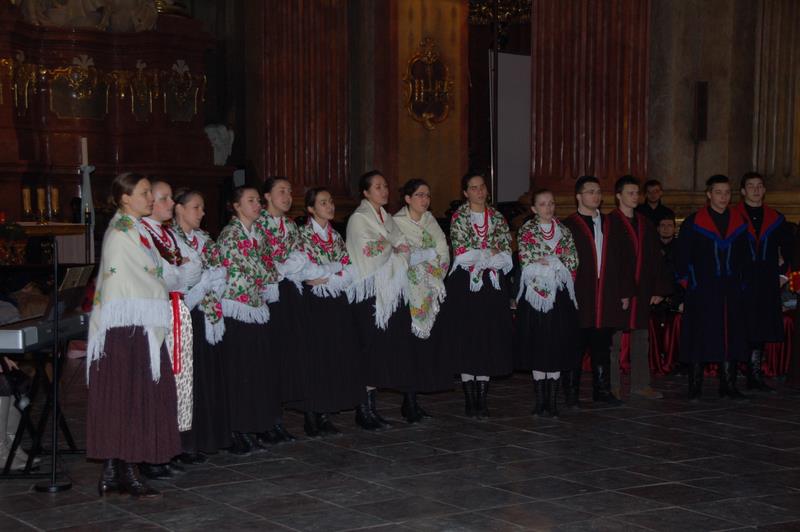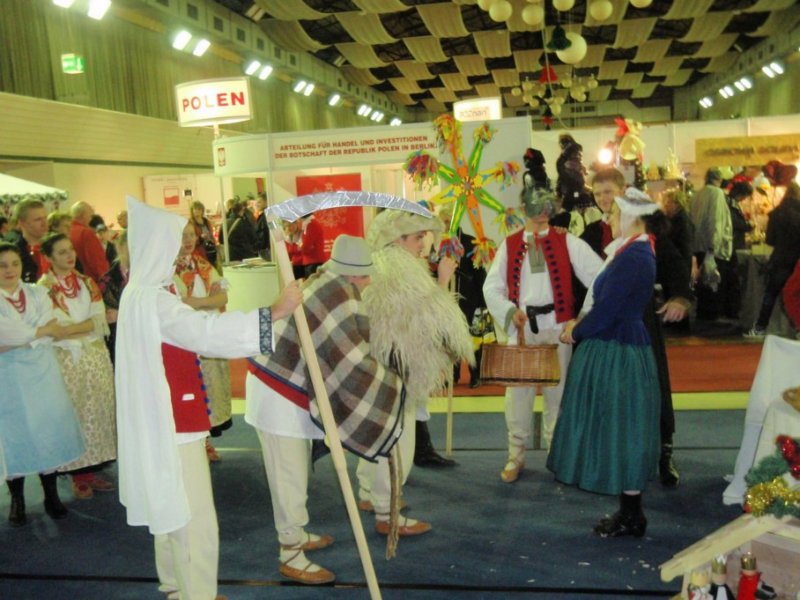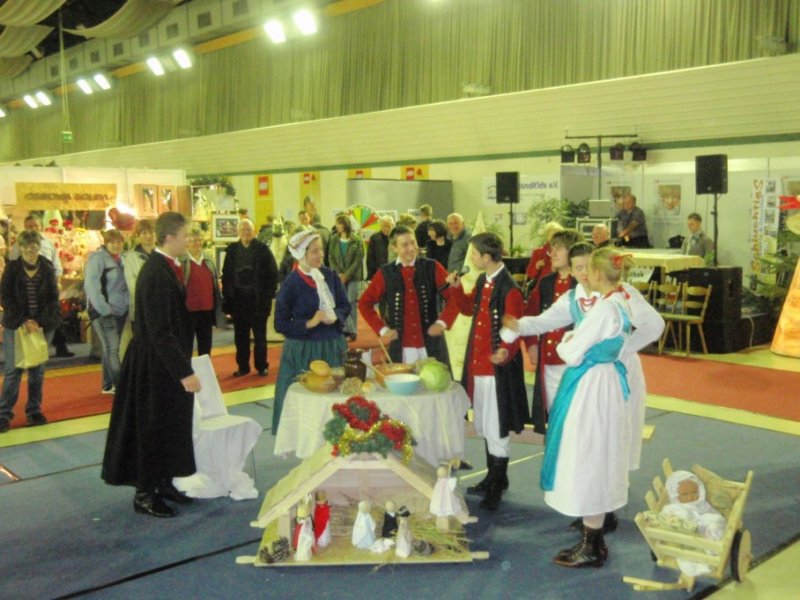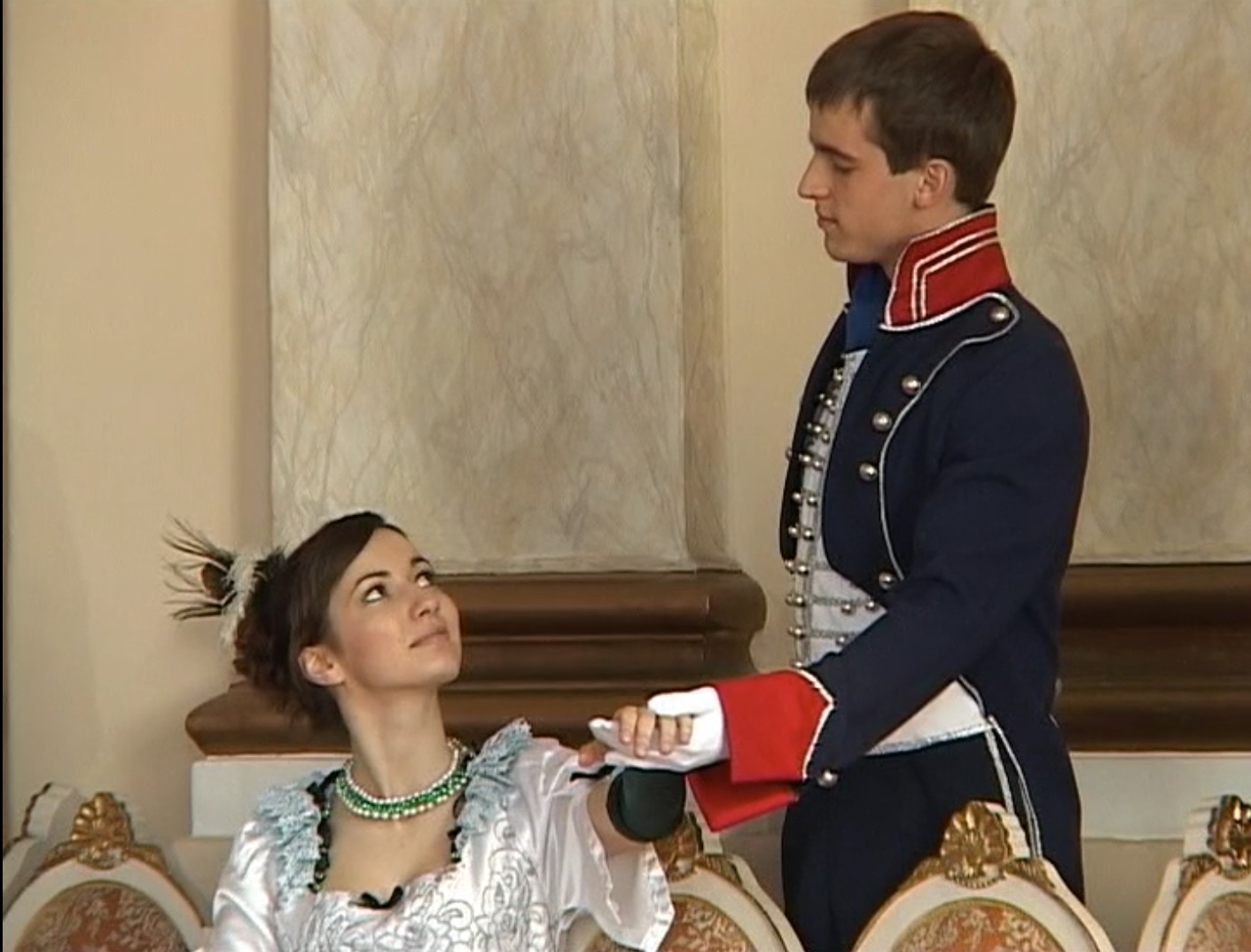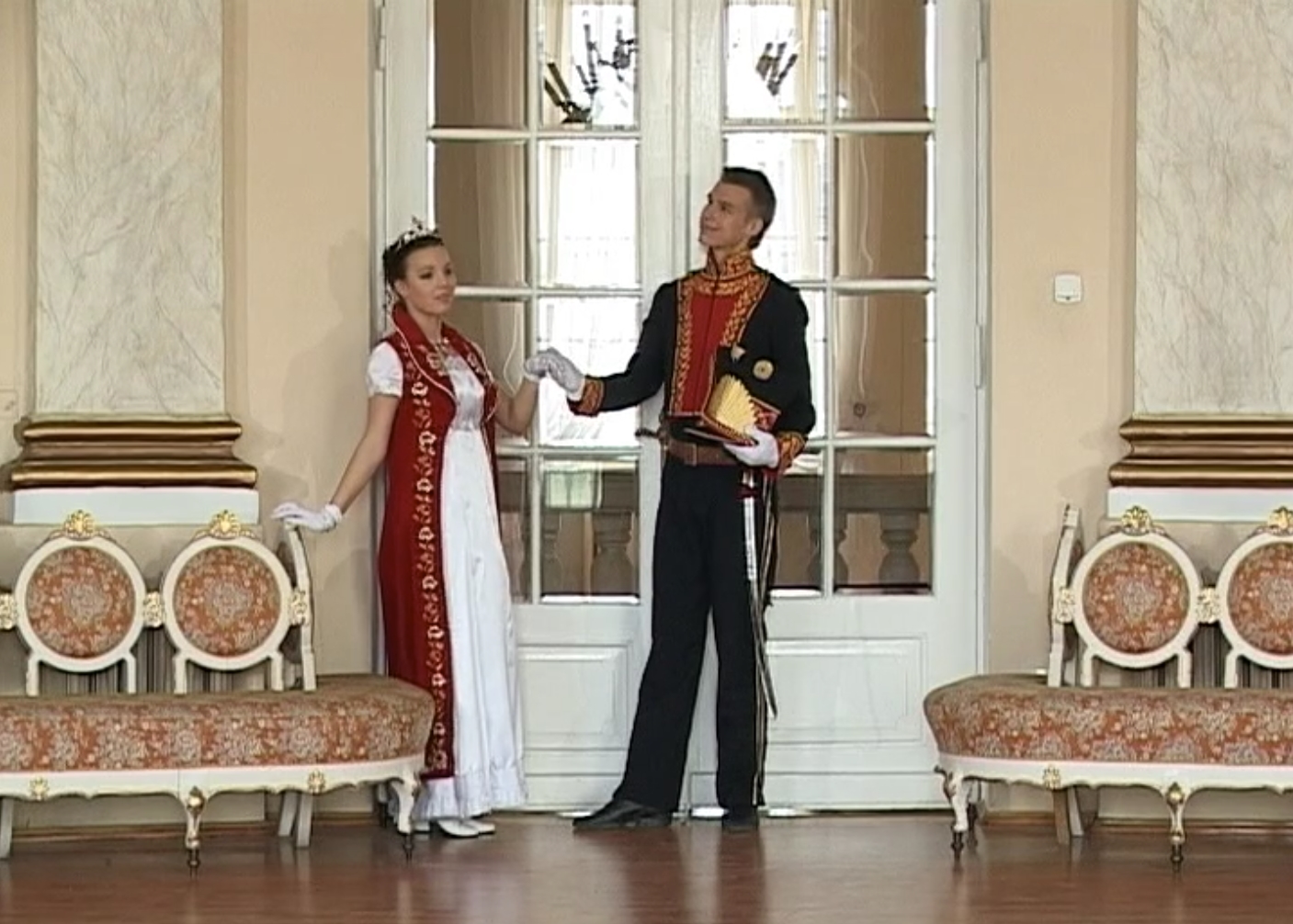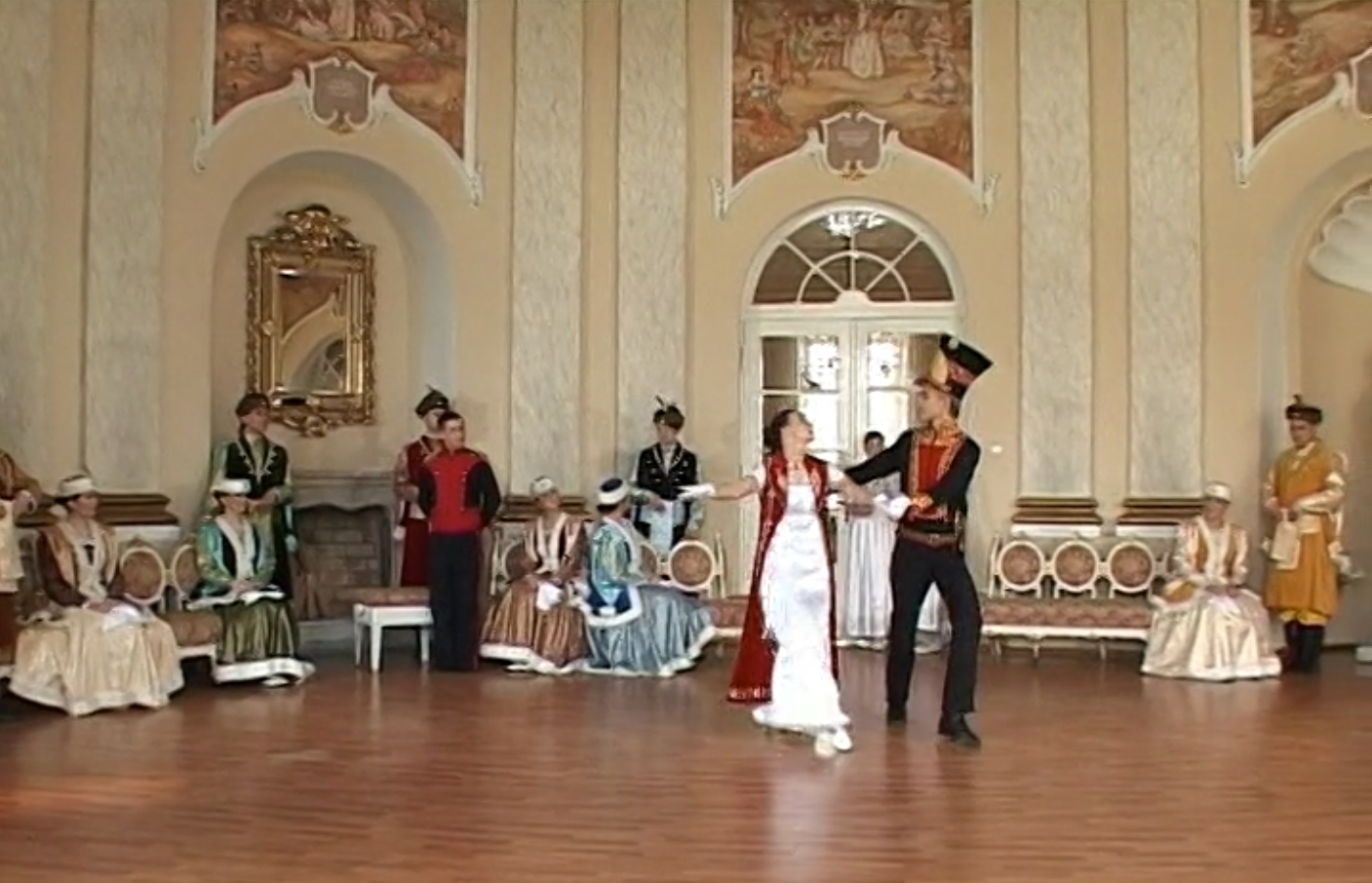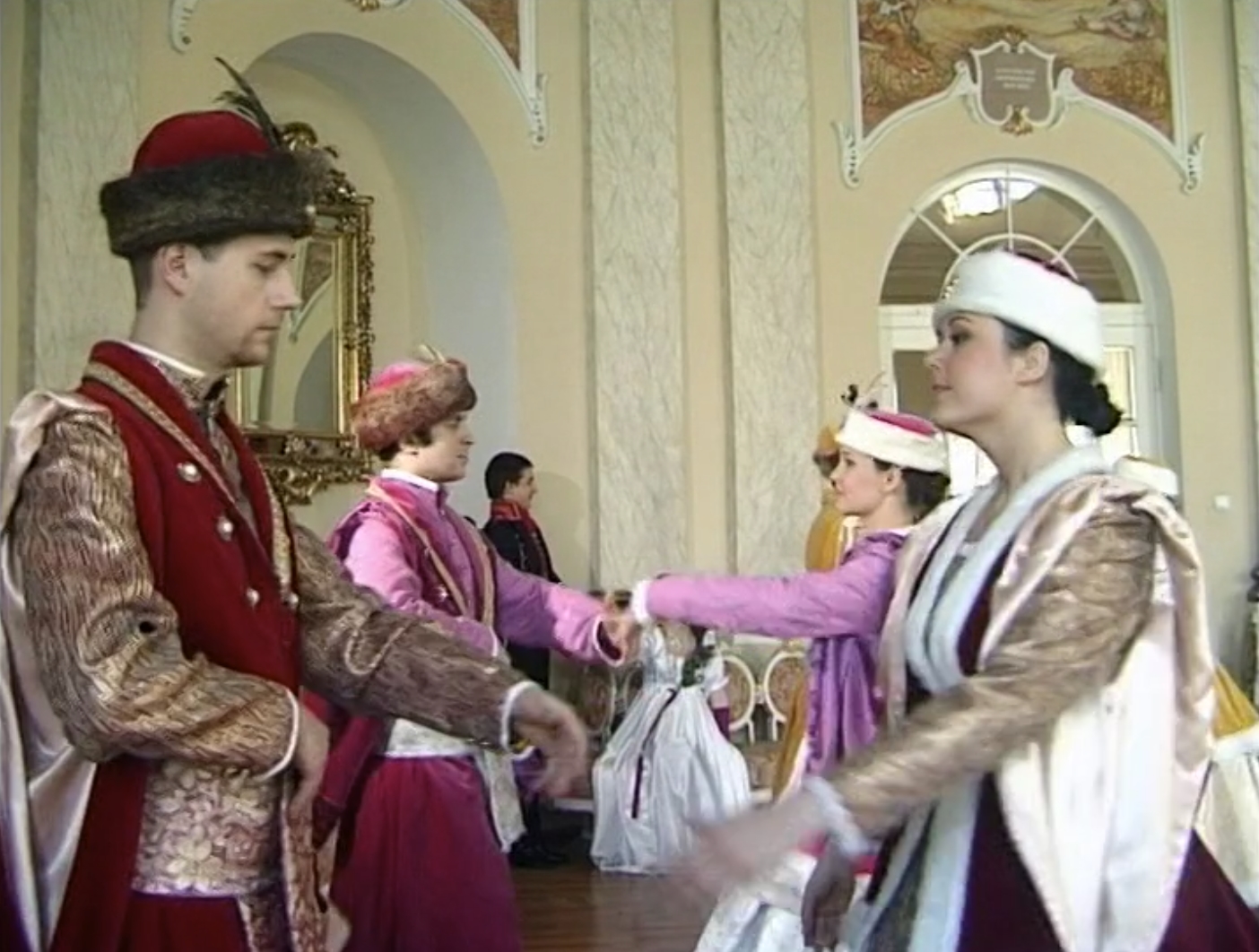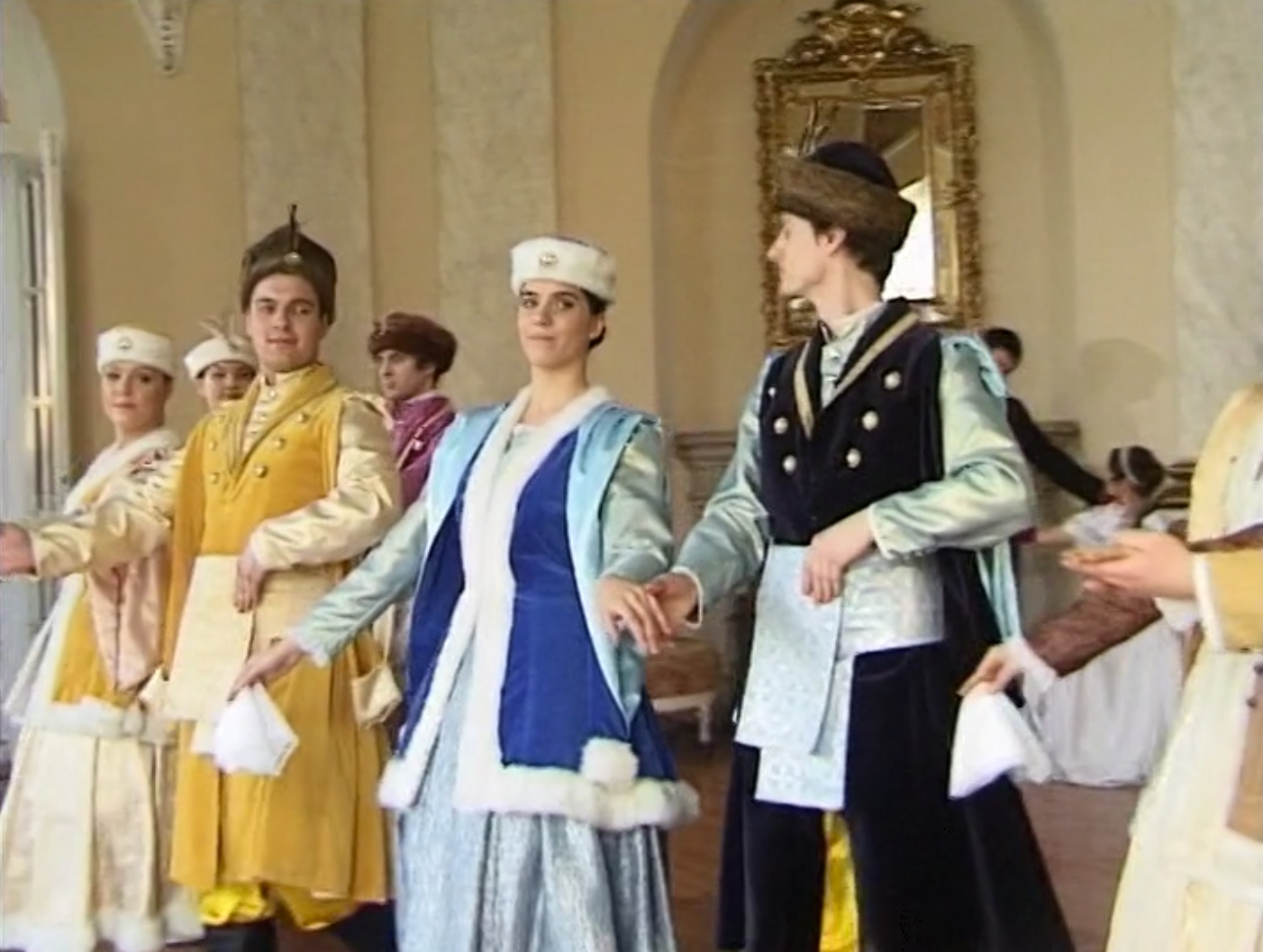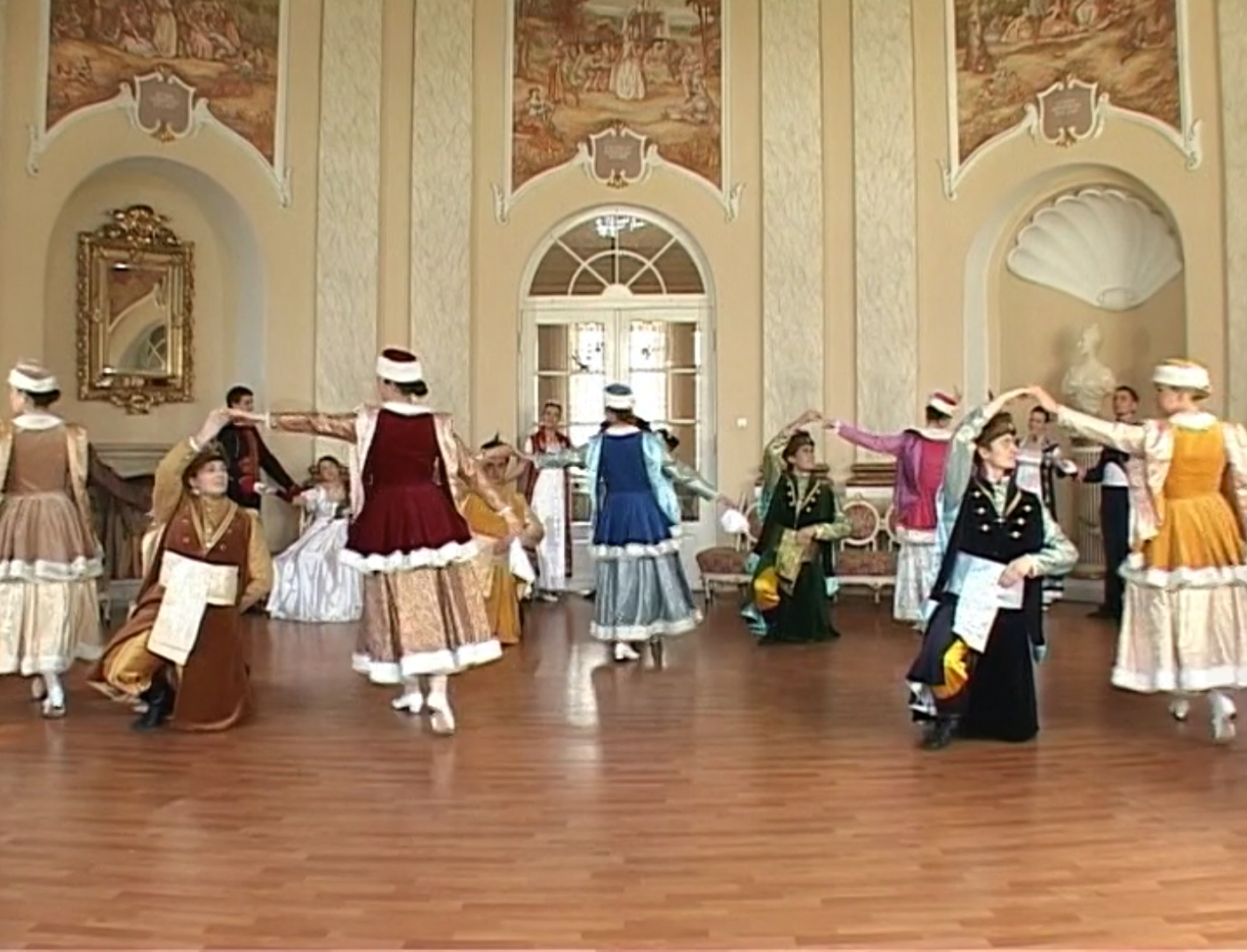Concert offer
Folk customs and rituals have played an important role in Polish culture to this day. They are especially visible at times of annual events such as harvest, Christmas Eve, Easter or the summer solstice.
Spring customs are among the most important ones, cultivated both in the city and in the countryside.
On the fourth Sunday of Lent, mainly in south-western Poland, a ritual of destroying, drowning or burning an effigy, usually a female figure, was held, which, depending on the region, was called Marzanna, Marzaniok, Śmiercicha. The figure of Marzanna was the image of winter, death and all evil.
The ritual of burning or drowning the effigy was performed with the intention of changing the seasons of the year and was supposed to bring about the rapid arrival of spring.
It was connected with the New Summer rite – Goik Zielony – a green branch decorated with ribbons and eggs, which was triumphantly brought into the village after the destruction of Śmiercicha.
Easter – called the Passover in the first centuries – is the oldest, the earliest established and at the same time the greatest Christian holiday. Christ’s Resurrection is a triumphant Festival of Life and Spring Renewal.
During Easter, an egg reigns as a symbol of new life, both in the form of decorations and a meal. Holy Week, the last week of Lent, falling between the two Sundays: Palm Sunday and Easter Sunday, is characterized by a rich liturgy.
It abounds in numerous folk traditions such as scaring away evil powers with knockers, home customs – swallowing catkins taken from palm trees and Friday’s God’s wounds, and of course, intensive preparation of dishes including cakes, cheesecakes, sausages and meat as well as the Easter lamb called Agnusek.
Easter Sunday is the time devoted mainly to feasting and eating blessed Easter foods, the so-called Święconka, as well as for fun games like rolling eggs on a plank so that it falls into a hole called ducka.
Monday, known as “Wet Monday”, is Śmigus-Dyngus, i.e. the custom of pouring water – mainly on maids, and the custom of walking with wishes from cottage to cottage with a dyngus cock – a symbol of beauty and vital powers. On Easter Tuesday, donations for a “śmiergust” party were collected.
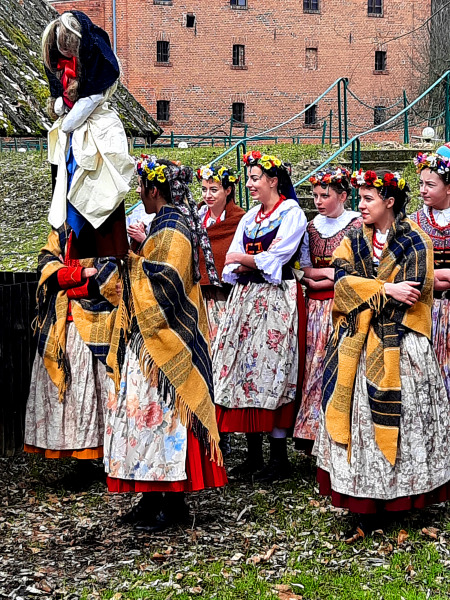
In polish culture, religious and folk ceremonies play a key role until today. They are visible during annual events, for example: Christmas, Easter as well as harvest and summer solstice. The most important ceremonies as well in cities as in villages are spring events.
In Christian tradition, before the Easter, there is an 40-day “huge fast” where the people should avoid leisure activities and prepare for the Resurrection of Jesus. It always starts on Wednesday (which is called Ash Wednesday), when people go to church and during the holy Mass priest says “ashes to ashes and dust to dust” and sprinkles ash on their heads. It is a sign of the passing. The huge fast ends during the “Holy Week”. The first day is Sunday – called Palm Sunday. This day marks the arrival of Jesus to Jerusalem. This day, Christians organize a procession when people is carrying big palm leaves or smaller twigs and sing religious songs praising Jesus.
In the folk tradition, during this period mostly village people prepare a well-decorated dummy of woman – the goddess of death which is called “Marzanna”. It was a symbol of death and evil. This dummy was previously drowned in the river, but nowadays it is burned. This custom aim the farewell of winter and welcome of spring. During the celebration people sing dedicated songs and carry the dummy in the procession. This event was quite popular in the past, but nowadays it is practiced very rarely. It is just a fun without any special meaning.
The rest of “Holy Week” includes Monday, Tuesday and Wednesday, which are not celebrated. The first important day is Thursday (the day when Jesus established the Eucharist sacrament), Friday (the crucifying of Jesus), Saturday (waking near the grave) and Sunday (the day of Resurrection). In Poland, people celebrate the Easter also during the next Monday, which is a day free of work. On the Holy Saturday, people go to church in case of blessing the food. There are some special products which are put into the basket. The most important are eggs, butter shaped as a lamb, a slice of bread, a bit of salt and pepper, a horseradish, a sausage and an Easter cake. Many people also put there some sweets, mostly in the shape of a hare or eggs. These product are symbols of victory, wealth, immortality and life. The baskets are always decorated in a special way. The most common decoration is a white table napkin which covers the food. Also, people put there a little flag with religious symbols. The handle of basket is often decorated with ribbons and twigs of boxwood – this plant symbolizes the immortality as it is always green.
The blessed food is eaten during the Easter breakfast on Sunday – the day when people celebrate the Resurrection of Jesus. During this day, many children are looking for chocolate eggs which are hidden in some different places of home and garden. They believe that these sweets are dropped by the Easter hare.
The next Monday is a second day of celebration. There is a common tradition to squirt the water on family members and friends using plastic eggs and water pistols.(It is called Śmigus-Dyngus” in Polish) It was popular to meet in the big groups, but now it is celebrated mostly among the household. In the past, it was connected with other custom when young boys were hitting young girls with branches. Also, the almost forgotten activity was coming to neighbors with a decorated branch called “ gaik” with singing songs and greeting to the host. At the eastern Poland, in was celebrated with the participation of local firefighters. There was also a play where the participants were tossing the egg on a wooden board which had to drop into the hole.

In this take, we will present customs described below with an exciting fight to win the top of the pile prize and a folk party full of verve and dynamics crowning the celebration. The rural population associated the Green Week with various pastoral and agricultural holidays, and some of these customs have survived to this day. The custom of decorating houses, fences and gates was common throughout Poland. The farm was usually decorated with birch branches, and a thick layer of sweet flag was laid in the backyards and on the floors in the huts.
During the Green Week, green May poles were placed in squares, and on the top a prize was attached, for example a bottle of vodka, a decorative vest or a pair of shoes, and the pole itself was smeared with soap or oil to make it even more difficult to climb. These gifts were donated by parish priests, wealthy farmers and court lords. Young bachelors competed with each other, and the best of them managed to take a valuable prize from the pole.
A hundred years ago, during the Green Week, there was a celebratory tour with the princess. The most beautiful girl in the village was chosen. Then, she was dressed in a festive outfit, a crown of flowers was put on her head and she was followed by other girls around the fields. At the end of the celebrations, there were dances in the inn or in the house of the best host. The party was in honour of the victorious spring and a good harvest and, honouring the chosen princess, it lasted till morning.
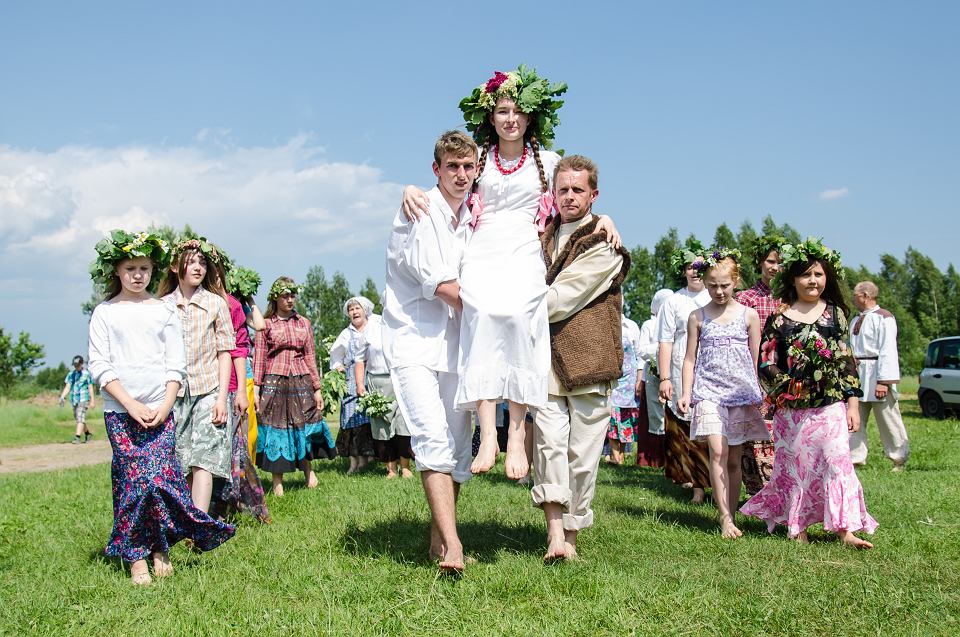
It is a ritual related to “welcoming spring” when shepherds took their sheep to meadows which were near lakes and dense forests. They offered gifts to abundance gods composed of wool, sheep and flower wreaths.
According to old Kashubians’ accounts, this ritual began on Saturday, fifteen days before the Green Week, and ended on the Wednesday before the Feast of the Ascension. Sheep were driven from the whole village to a large clearing. Then, they were bathed in a river or lake and again taken to a meadow to let the wool dry. Obtaining a large amount of wool from the “sheep shearing” gave villagers a good reason to play and celebrate. They partied in a carefree way, and this is also the nature of the scene presented by the ensemble.
Kashubians were looking for new and richer artistic forms as a background for the ritual. In addition to fun games such as “owczarz” (shepherd), “glemda”, ritual dances – “diobli tańc” (devil’s dance), they are presented in more developed dance forms such as “krzyżnik”, “koseder”, “dźek”, etc.
Songs accompanying the ritual are performed by dancers in the language of southern Kashubians. Typical instruments of this region are a devil’s violin, burczybas. The entire show, including costumes, was consulted with the indigenous people of Kashubia.
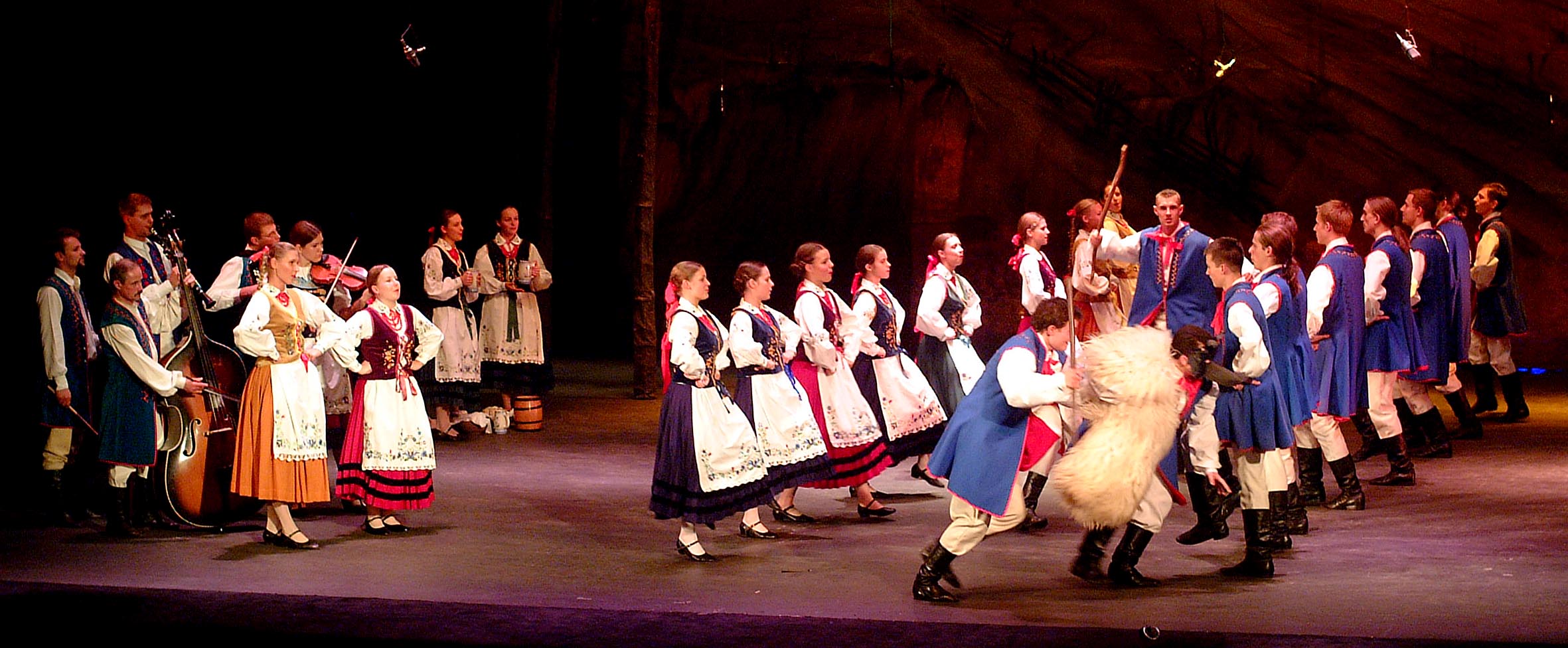
The cult of St. Barbara was active in Silesia in the period of ore mining, which is older than coal mining. On 4 December, there was usually a ceremonial appointment of older loaders as hewers, or “foreman appointment”. The period of the preparation of a candidate to become a hewer was 2-7 years. The list of people who would get the “appointment” honour was established long before the mining feast. It was proposed to the mine management by a steiger (mining foreman). On St. Barbara’s Day, all the miners dressed in ceremonial costumes, gathered in the mine square and, with their own orchestra, went to church for mass.
An additional button was attached to the collar of a freshly qualified hewer and he was girded with a smock. The celebration ended with a meal. Women were not allowed to participate in Barbórka celebrations. The miner’s wife did not have access to her husband’s workplace. It was believed that a married woman working in the mine would give birth to crippled children. Girls working in the mine stopped working after getting married.
The scenic picture presented by the ensemble is therefore clearly divided into the so-called Barbórka and the part presenting various dances and songs of Upper Silesia, with the use of the Rozbark-Bytom costume.
Upper Silesian dance folklore is characterized by a great variety of dance forms:
– single-pair dances (swirling, rotating, with elements of fun games, clapping and kneeling, imitating craftsmen, etc.),
– group dances with a specific spatial aspect (Polonaise, Kokotek, Ułan, Lipka, Mietlorz),
– triple dances (1 boy, 2 girls): Błogosławiony (Blessed), Druciorz (Wire maker) and the most popular Trojak (Threesome), that is, “Zasiali górale…”.

The custom has been preserved until today. It comes from the period when aurochs, dangerous animals, inhabited Polish forests. The main character is turoń – a boy dressed in a sheepskin coat or covered with a blanket, holding an auroch’s head on a stick in his hand. Turoń is led by a Gypsy on a chain. In addition, the participants are Dziad (Old man), Baba (Old woman), Żyd (Jew), and music performed mostly by two violins, a clarinet and bass. After arriving at the farmyard, the masqueraders sing or recite appropriate, humorous texts to receive donations (cheese, eggs, bread, sausage or money). Music is being played, turoń is dancing, playing tricks, jumping on stools, scaring girls, etc.
Turoń, tired of these fun games, falls to the ground and pretends to be dead. Everybody moans and feels sorry for the animal, trying to save it by pouring swill into the mouth and blowing wind under the tail. Finally, turoń gets up and everyone is happy. Dancing and singing start again. The boys are running for the girls, merry music is being played, the dancers shout and stamp their feet to the music. Often, they sing humorous texts composed on the spot. Sometimes, the masqueraders, having had a good time and having played tricks in one cottage, visit successive houses one by one. Both young and old have fun throughout the village all night long.
The scenic picture shows the invention and dynamics of the custom, the character of the region, and the fully festive folk costume of Sącz Lachs – the most richly ornamented costume in Poland.
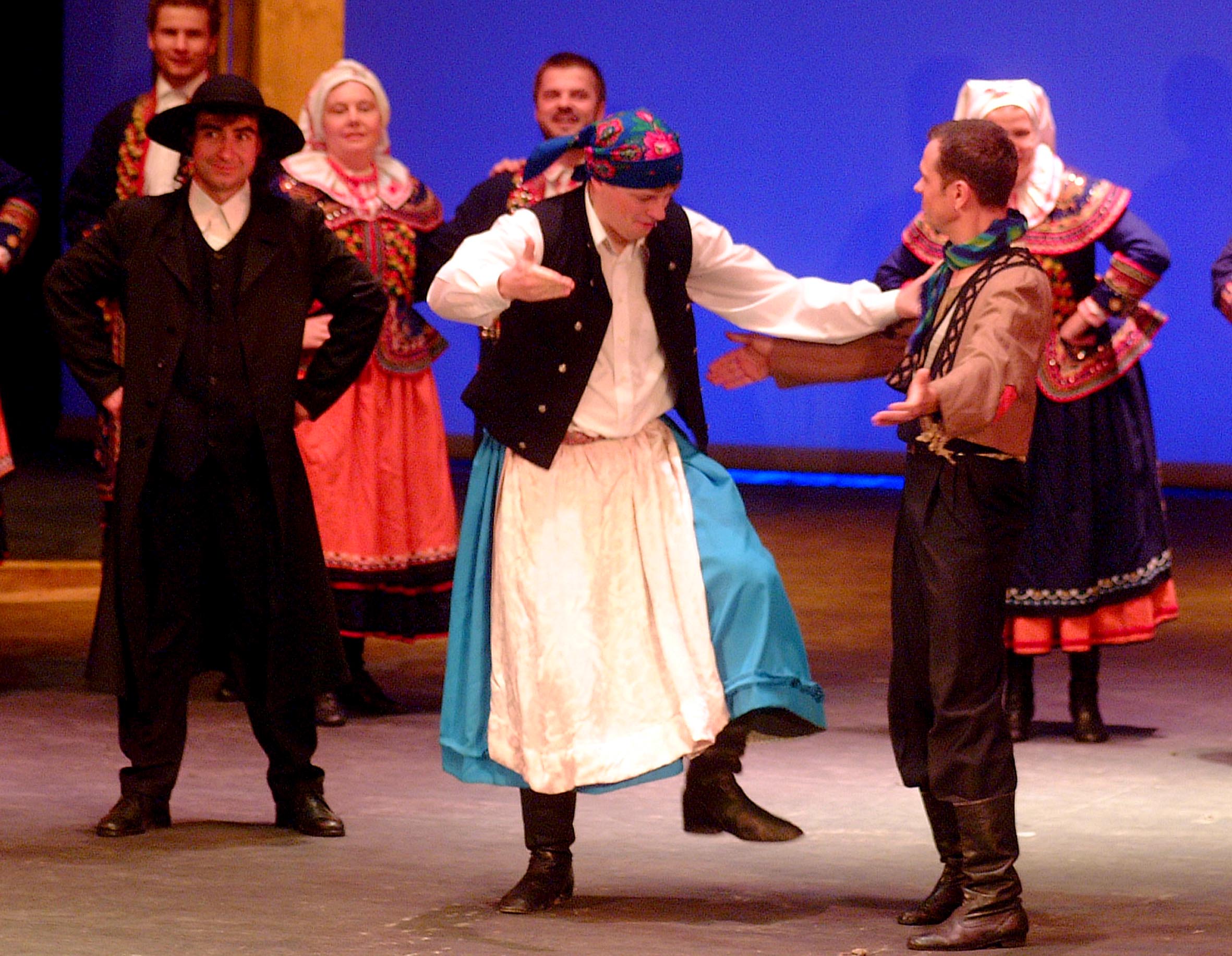
We usually associate autumn with long, rainy days, autumn blues and cold, and long evenings at home. Meanwhile, for our ancestors, the autumn period was extremely busy and abounded in various challenges. People made every effort to prepare and secure themselves as well as possible for the coming winter.
It all began working together in the field. Villagers would go together to dig potatoes, rub and squeeze flax and wool from which linen was woven for the winter. Each such meeting was accompanied by cheerful chats and songs. Perhaps that is why our ancestors did not shy away from hard work. Particularly long autumn evenings were devoted to preparing winter supplies and tearing feathers.
One of the basic autumn tasks was to mulch potatoes for the winter and ferment cabbage. Neighbours, relatives and family members helped with all field work, harvesting the last plants and making preserves for the winter, knowing that after the work was completed, the host would repay them with a square meal and a dancing feast.
In the scene entitled “Autumn customs”, we focused on presenting the custom of fermenting cabbage, which then provides a theme for dancing together. Many times, all the villagers would come to the party, bringing with them the “king of cabbage” / an effigy with a cabbage head”, who, according to beliefs, could not be refused admittance.
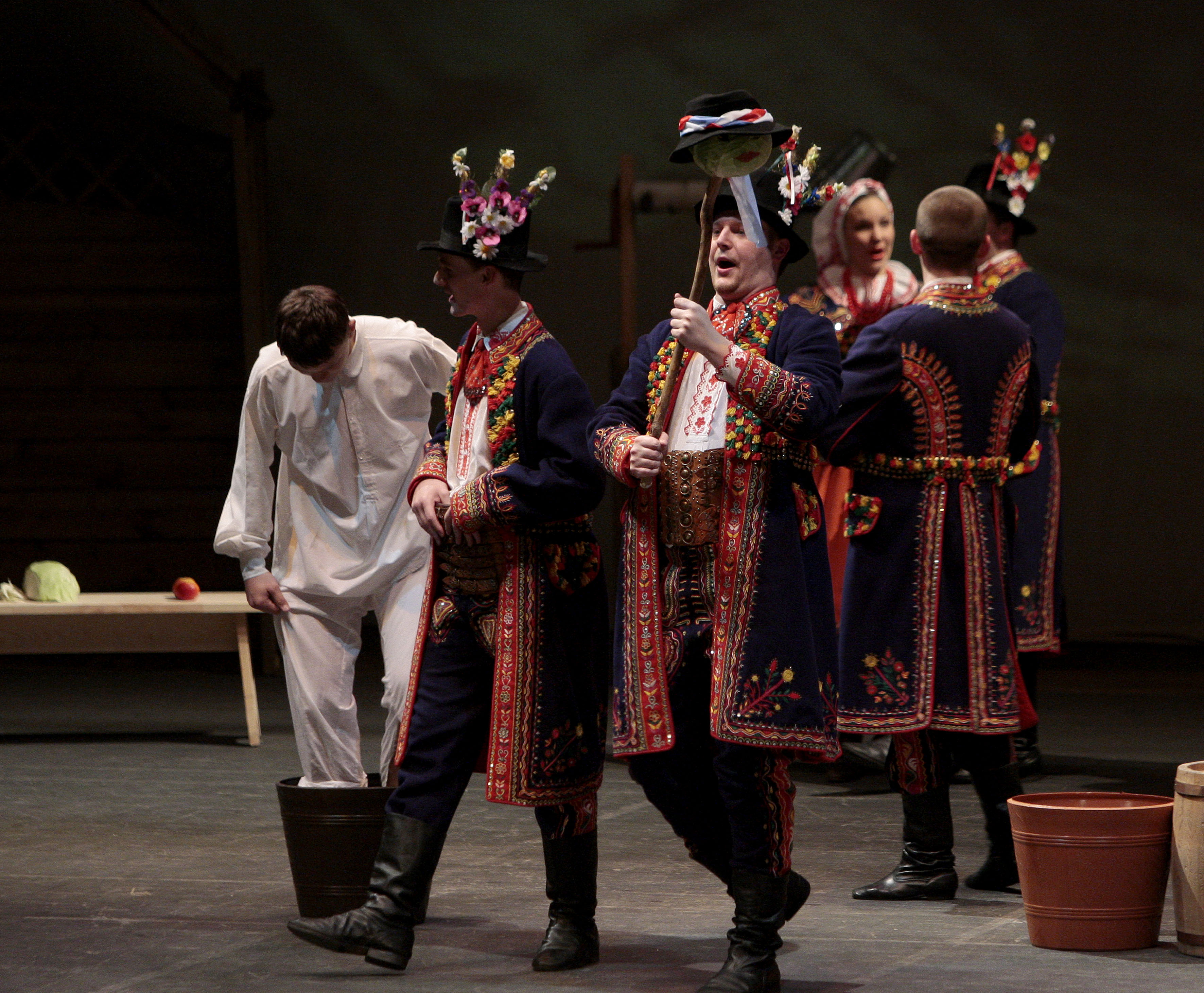
This custom survived in the Opoczno area until the interwar period. It was celebrated mainly on the eve of St. John, i.e. 23 June. On that day, the roofs of thatched cottages were decorated with burdock or mugwort, wells were cleaned and three rows of cabbage were mulched in the hope that it would grow better and not be damaged by caterpillars.
The most important celebrations took place after sunset. At that time, girls and boys dressed in festive clothes would go to a pasture near a river, lake or pond. They were all girded three times with mugwort. Girls would carry small wreaths in white scarves made of at least two types of plants. One of them had to be flax stolen from the field of a family where only bachelors lived. The youth sang various love songs as they walked. After coming to the meadow, a fire was lit, singing continued being accompanied by music, and skillful boys jumped through the fire.
The fun activities got livelier and changed its character to more joyful and witty. There were satirical texts divided into the roles of boys and girls. After dancing around the fire and singing, the girls lit candles at the wreaths and carried them around the dying fire, and then went to the water, where they let them flow with the current. From the movement of wreaths (where one symbolized a boy, the other a girl), the girls drew appropriate horoscopes – if the wreaths came together, they boded marriage, if they came apart – failure, if they drowned – death.
In the scenic picture, an attempt was made to show the typical songs sung on the occasion of sobótka, the behaviour of the participants and the atmosphere of the custom. The most characteristic dances and musical instruments for the region were also presented, as well as the typical manner of performing music by the band with the use of a drum – very popular in this region.
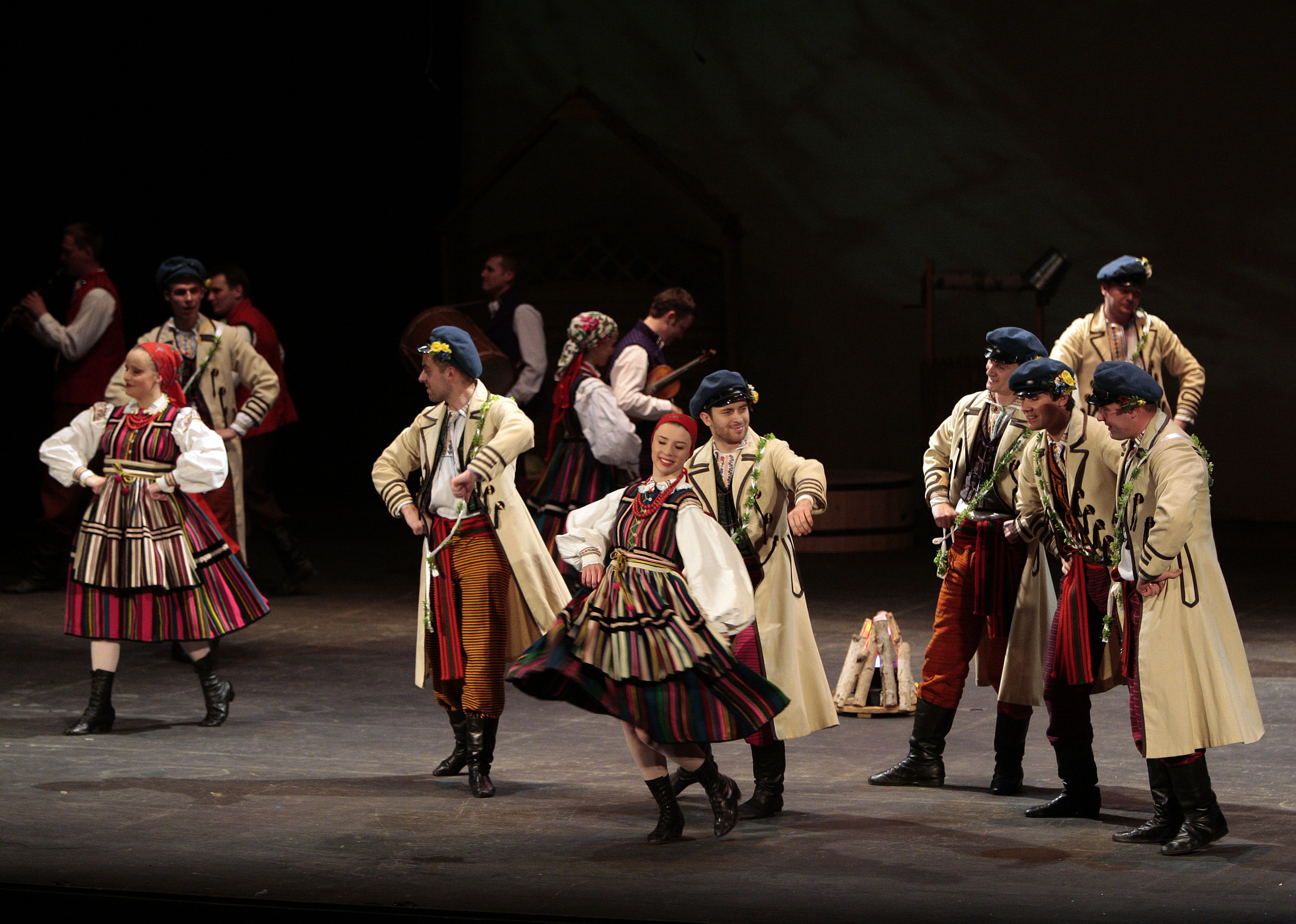
One could meet people dancing krakowiak in the countryside of the Cracow area as early as in the 15th century, which was mentioned by Mikołaj Rej in his chronicles. Krakowiak is the most popular dance from Cracow, which, along with polonaise, mazur or oberek, has become the icon of the Polish folk dance. This dance gained the greatest popularity at the turn of the 19th and 20th centuries, during the partitions. Currently, it is recognized as an element of Polish culture, both in the country and around the world.
The name of the dance comes from the 17th century and referred to a group of dances with their own local names: mijany (passing), dreptany (trotting), ścigany (chasing), skalmierzak, przebiegany (running) and others.
Krakowiak is an improvised two-metre group dance performed in pairs, in syncopated and eighth rhythms at a lively pace. Its characteristic elements are a step forward with a jump, a side step with adduction, numerous heel clicking, striking and accentuated steps, as well as mutual escaping and chasing partners, combined with the passing of dancers. In its traditional form, dance elements were interspersed with singing by other dancers. In its national form, krakowiak is modelled on the country dances of the Cracow neighbourhood. At the end of the 18th century, the characteristic syncopated rhythms of krakowiak appeared in symphonic music, and at the beginning of the 19th century this dance became popular in stage and instrumental music.
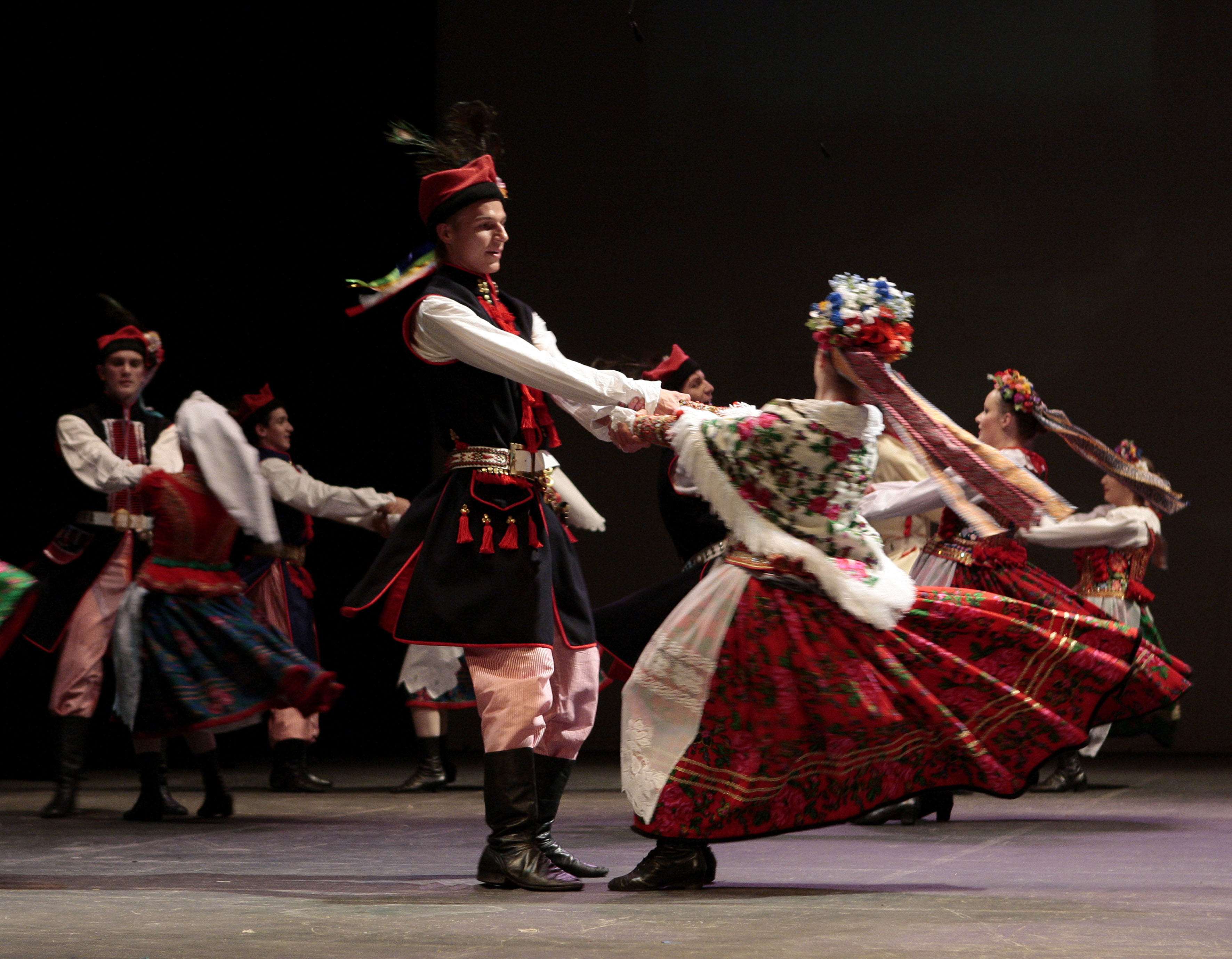
This performance shows the most important events in the history of Poland. It presents the influence of Christianity on the history of Poland and the deep patriotism of the nation expressed in dance, singing, music and recitation with the use of modern forms of multimedia presentation. The starting point is the baptism of Mieszko I, allowing him to enter the community of Christian countries. In the programme based on folk, court and national traditions, the great role of faith is visible, in which Poles saw support during wars and drew hope during uprisings. As a result, Poles could rejoice at the election of the Polish Pope who bonded the country internally and strengthened it internationally.

CHRISTMAS CUSTOMS IN THE COUNTRYSIDE OF THE 19TH CENTURY:
A theatre scene based on customs taken from Oskar Kolberg’s publications. A folk Christmas tradition passed down with authentic customs, dialect, costumes, music, dances and songs.
FOLK CAROLS:
While maintaining the dialect, manners, and instruments characteristic of various regions of Poland, Poligrodzianie and its music band offer over half an hour of material of folk carols depicting the rich and varied folklore of our country.
CHRISTMAS OF THE WORLD:
France, Italy, Russia, Great Britain – these are just some of the places from which Poligrodzianie drew their inspiration, creating an interesting repertoire focusing on the linguistic and musical differences and similarities of Christmas carols from the far ends of the globe. The whole programme creates a colourful and atmospheric picture that takes us on a short trip around the world.
CHRISTMAS CAROLS OF OLD POLAND:
One-voice and multi-voice translations (from Latin) of Anonymus, Gomułka or Wacław of Szamotuły. Rich in harmony, interesting in terms of texts, in costumes corresponding to the epoch – this is just a short description of a very interesting collection of mediaeval and Renaissance hymnals in Polish. Poligrodzianie, as one of the few ensembles in Poland, revives forgotten history through words and music.
FOLK NATIVITY PLAY
Characteristic for Mazovia, written in the mid-19th century, a traditional scene played by the youngest children, with carols, costumes and props. Maintaining the folk language, customs, costumes, Christmas songs and fun games, the youngest dancers of the Poligrodzianie Folk Ensemble offer a colourful and entertaining spectacle, pleasing the eye of both younger and older viewers.

The presentation of Polish national dances polonaise, mazurka and drabant, based on the custom of “Kulig – czyli Polskie Zapusty” (Sleigh ride – Polish Shrovetide) telling a story about the carnival party of the Polish nobility – in this case of Greater Poland.
Sleigh rides were already known in the 16th century and survived until the end of the 19th century. Carnival parties were organized from Christmas to Ash Wednesday, with more intensity in the last week of the carnival. The most popular and best organized sleigh rides were organized by the middle nobility in the mid-19th century, where the goal of sleigh rides was to have fun together. The plan of a sleigh ride was carefully thought out. A few weeks before the planned start date, the order of the houses was arranged (depending on the situation, the state of the pantry, etc.), costumes were made, speeches – orations were prepared and characters were set: starosta (leader) of the sleigh ride with his wife, an organist with his wife , the bride and groom, bridesmaids and other roles, for example, of groomsmen – a peasant wedding was planned to be performed. Apart from the masqueraders, e.g. a Jew, turoń, a wolf, a sleigh ride harbinger, Harlequin (always in a black mask) and role-playing at a wedding, the rest of the participants were obligatory to wear kontusz (a type of outer garment), and starosta – żupan (a long lined garment). The hosts also put on their kontusz to accept the sleigh ride. When Harlequin in a single sleigh was approaching the first court, he announced the coming of the sleigh by shouting or throwing a roll of paper, the rest of the participants were preparing a procession. Girls and elders would sit on sleighs, the front of which took the shape of a swan’s neck, a head of a black man or a bear. Horses were placed in a group of four or six and decorated with bows and bells. The male youth rode horses holding torches. The sleigh ride party accompanied by the sounds of music approached through the open gate in front of the porch. A welcome speech was delivered by starosta, and the host welcomed and invited the guests.
Everyone then went to a ballroom dancing polonaise led by the host with starosta’s wife and starosta with the hostess. Then, mazur was danced. Young people danced it, while the elders went to other rooms to play party games or watched the young play. All the dances were led by a headman. Only Polish dances were danced: polonaise, mazur, krakowiak, drabant, oberek (in Mazovia). Between the dances, cheers were made and toasts were raised. Halfway through the party, the participants passed marching to supper, after which dancing and fun began anew. Depending on the wealth of the host, people had fun for one or several days in one place. The party ended with drabant and a bugle sound or a call by Harlequin. The group, having become larger, then moved to the next manor house accompanied by the sounds of music.
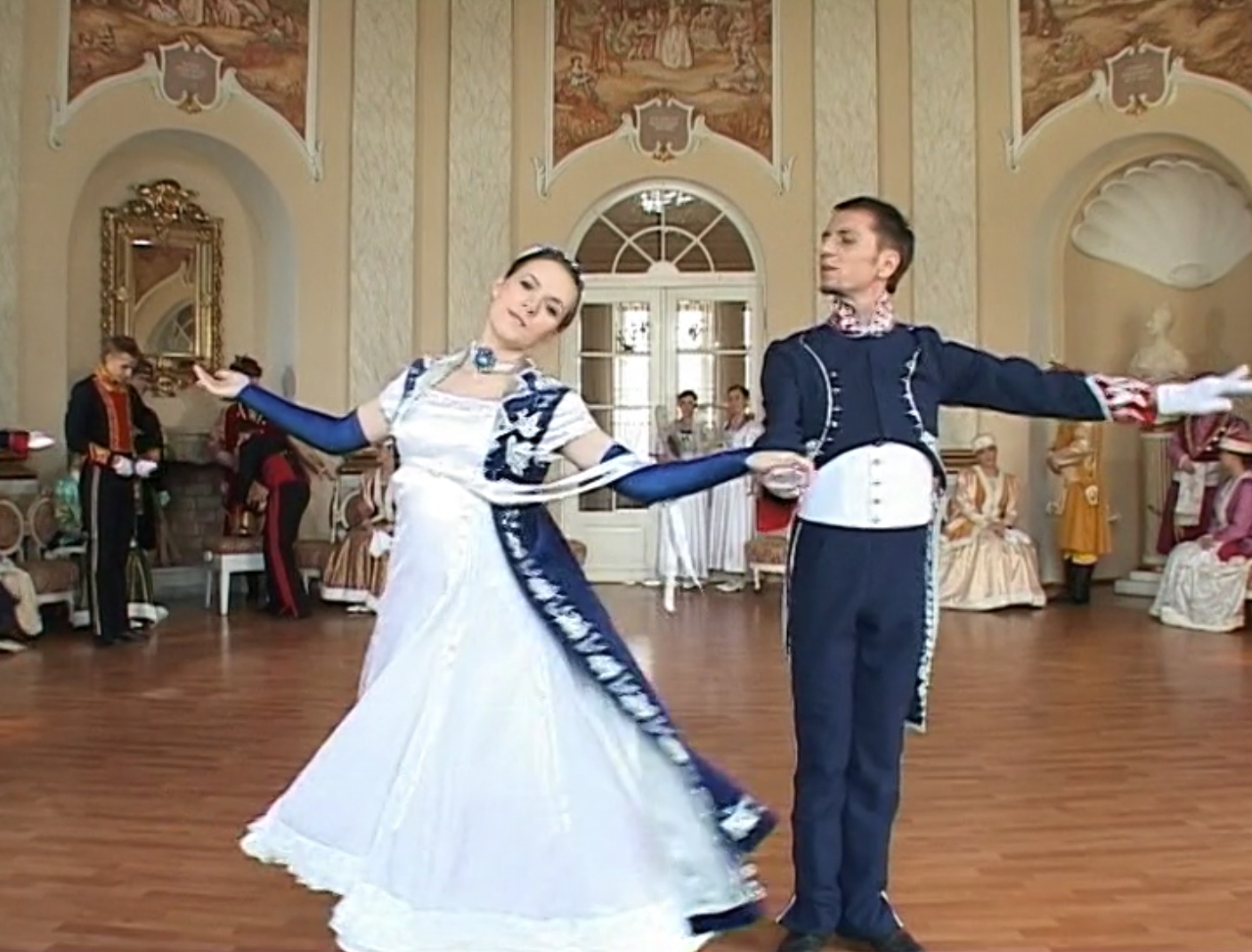
Dances and songs from different regions, presented in costumes characteristic for a given region and with the accompaniment of instruments appropriate for a given region.
· Szamotuły
· Biskupizna
· Kashubia
· Opoczno
· Silesia
· Żywiec
· Beskids
· Pieniny Mountains
· Nowy Sącz
· Rzeszów

· Polonaise
· Mazur
· Krakowiak
· Kujawiak with oberek

Organizer
Project co-financed by















